Text
[Hanfu · 漢服]Chinese Late Warring States period(475–221 BC) Traditional Clothing Hanfu Based On Based On Chu (state)Historical Artifacts

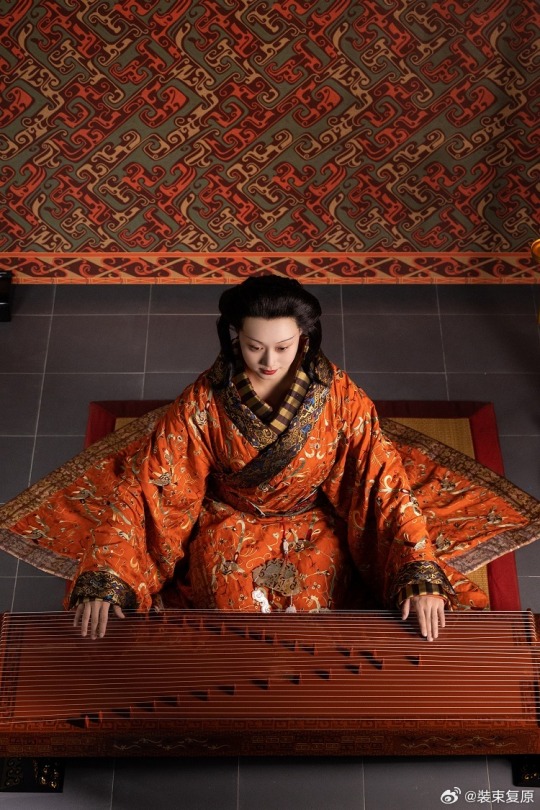
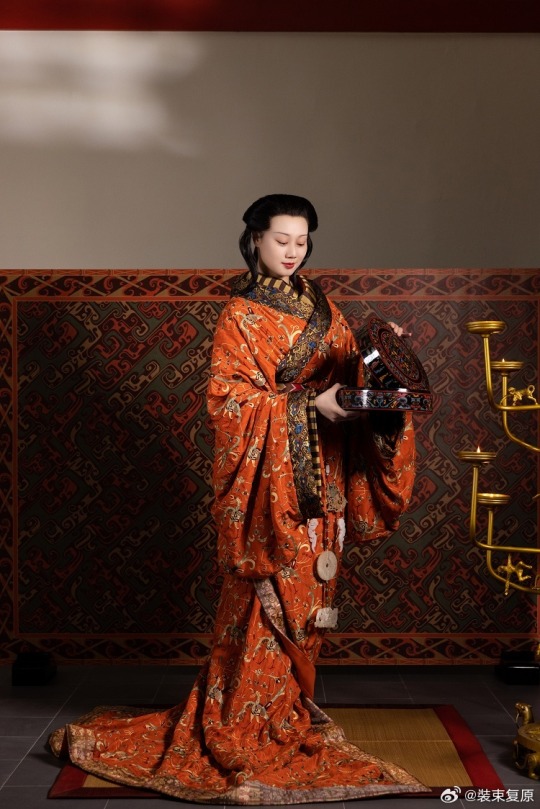
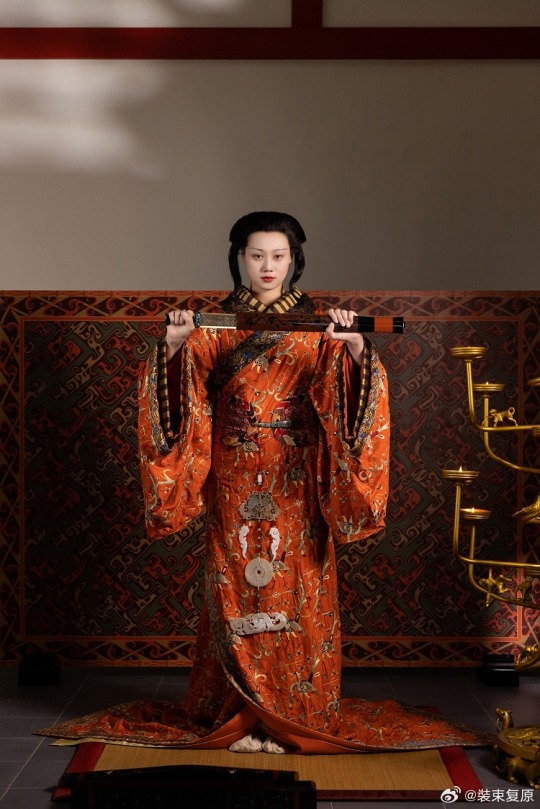
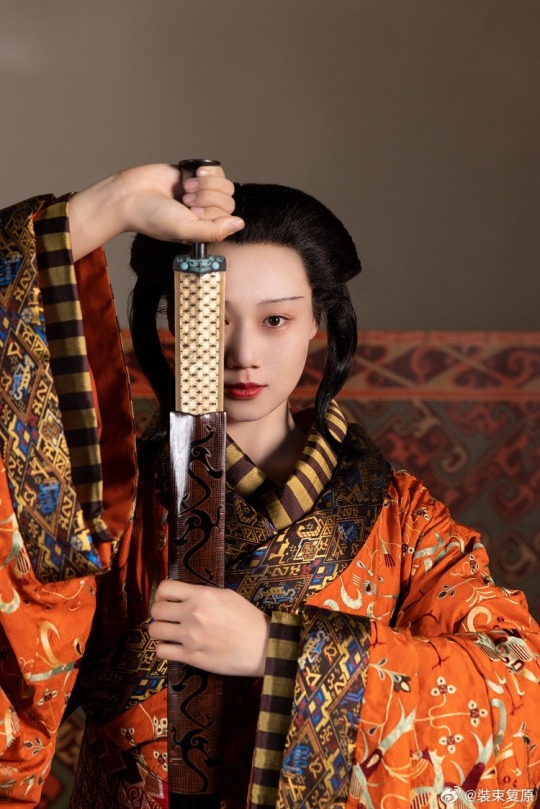
【Historical Artifact Reference】:
Late Warring States period(475–221 BC):Two conjoined jade dancers unearthed from Jincun, Luoyang,collected by Freer Museum of Art
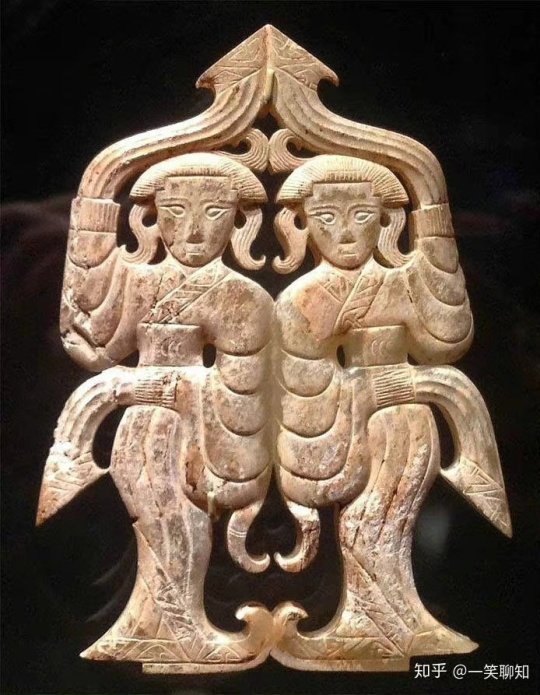
A similar jade dancer was also unearthed from the tomb of Haihunhou, the richest royal family member in the Han Dynasty, and was one of his treasures.

Warring States period, Eastern Zhou dynasty, 475-221 BCE,jade dancer by Freer Gallery of Art Collection.

Warring States period(475–221 BC)·Silver Head Figurine Bronze Lamp.Unearthed from the Wangcuo Tomb in Zhongshan state during the Warring States Period and collected by the Hebei Provincial Institute of Cultural Relics and Archaeology

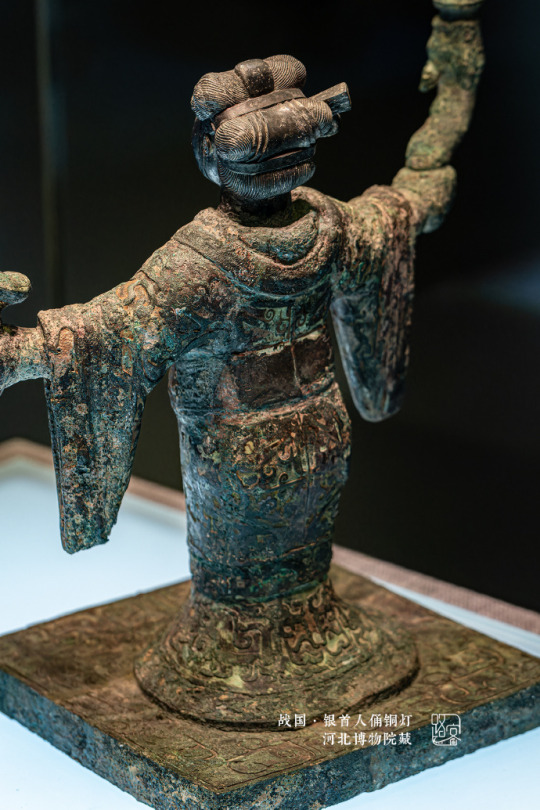
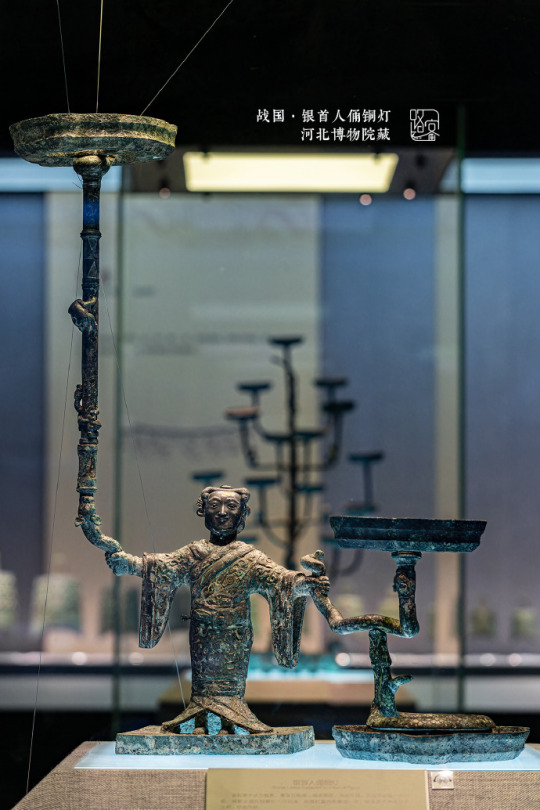
The figurine of a man dressed as a woman holds a snake in his hand, and 3 snakes correspond to 3 lamps.
Sword of Goujian/越王勾践剑:
The Sword of Goujian (Chinese: 越王勾践剑; pinyin: Yuèwáng Gōujiàn jiàn) is a tin bronze sword, renowned for its unusual sharpness, intricate design and resistance to tarnish rarely seen in artifacts of similar age. The sword is generally attributed to Goujian, one of the last kings of Yue during the Spring and Autumn period.
In 1965, the sword was found in an ancient tomb in Hubei. It is currently in the possession of the Hubei Provincial Museum.

【Histoty Note】Late Warring States Period·Noble Women Fashion
The attire of noblewomen in the late Warring States period, as reconstructed in this collection, is based on a comprehensive examination of garments and textiles unearthed from the Chu Tomb No. 1 at Mashan, Jiangling, as well as other artifacts from the same period.
During the late Warring States period, both noble men and women favored wearing robes that were connected from top to bottom. These garments were predominantly made of gauze, silk, brocade, and satin, with silk edging. From the Chu Tomb No. 1 at Mashan, there were discoveries of robes entirely embroidered or embroidered fragments. The embroidery technique employed was known as "locked stitches," which gave the patterns a three-dimensional, lively appearance, rich in decoration.
The two reconstructed robes in this collection consist of an inner robe made of plain silk with striped silk edging, and an outer robe made of brocade, embroidered with phoenixes and floral patterns, with embroidered satin edging. Following the structural design of clothing found in the Mashan Chu Tomb, rectangular fabric pieces were inserted at the junction of the main body, sleeves, and lower garment of the robe. Additionally, an overlap was made at the front of the main body and the lower garment to enlarge the internal space for better wrapping around the body curves. Furthermore, the waistline of the lower garment was not horizontal but inclined upward at an angle, allowing the lower hem to naturally overlap, forming an "enter" shape, facilitating movement.
The layered edging of the collars and sleeves of both inner and outer robes creates a sense of rhythm, with the two types of brocade patterns complementing each other, resulting in a harmonious effect. Apart from the robes, a wide brocade belt was worn around the waist, fastened with jade buckle hooks, and adorned with jade pendants, presenting an elegant and noble figure.
The reconstructed hairstyle draws inspiration from artifacts such as the jade dancer from the late Warring States period unearthed at the Marquis of Haihun Tomb in Nanchang, and the jade dancer from the Warring States period unearthed at Jin Village in Luoyang. It features a fan-shaped voluminous hairdo on the crown, with curled hair falling on both sides, and braided hair gathered at the back. The Book of Songs, "Xiao Ya: Duren Shi," vividly depicts the flowing curls of noblewomen during that period. Their images of curly-haired figures in long robes were also depicted in jade artifacts and other relics, becoming emblematic artistic representations.
The maturity and richness of clothing art in the late Warring States period were unparalleled in contemporary world civilizations, far beyond imagination. It witnessed the transition of Chinese civilization into the Middle Ages. The creatively styled garments and intricate fabric patterns from the Warring States period carry the unique essence, mysterious imagination, and ultimate romanticism of that era, serving as an endless source of artistic inspiration.
--------
Recreation Work by : @裝束复原
Weibo 🔗:https://weibo.com/1656910125/O6cUMBa1j
--------
#chinese hanfu#Late Warring States Period#Warring States period(475–221 BC)#hanfu#hanfu accessories#chinese traditional clothing#hanfu_challenge#chinese#china#historical#historical fashion#chinese history#china history#漢服#汉服#中華風#裝束复原
162 notes
·
View notes
Text
[Hanfu · 漢服]Chinese Western Han (202 BC – 9 AD) Traditional Clothing Hanfu Photoshoot
“这个位子 我有何坐不得?”
“我欲问鼎天下,试问谁与争锋”
"Why can't I sit in this seat?"
"I want to conquer the world, who can compete with me?"
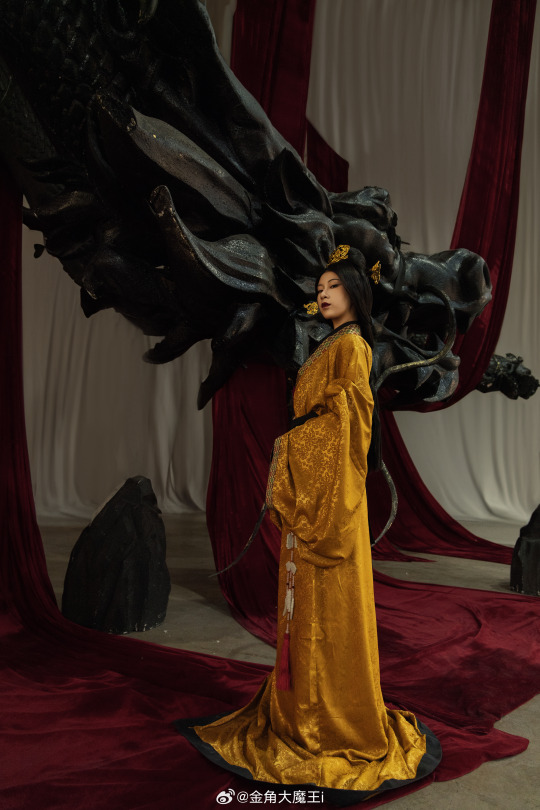
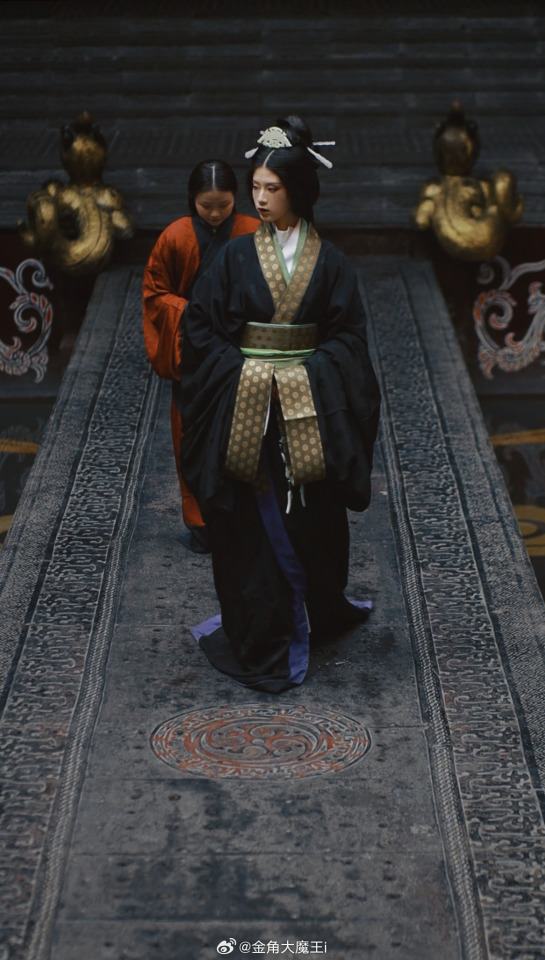






【About The First Empress of the Han Dynasty Empress Lü:Lǚ zhì(吕雉)】
Lü Zhi (241–18 August 180 BC), courtesy name E'xu (娥姁) and commonly known as Empress Lü (traditional Chinese: 呂后; simplified Chinese: 吕后; pinyin: Lǚ Hòu) and formally Empress Gao of Han (漢高后; 汉高后; Hàn Gāo Hòu), was the empress consort of Gaozu, the founding emperor of the Han dynasty. They had two known children, Liu Ying (later Emperor Hui of Han) and Princess Yuan of Lu. Lü was the first woman to assume the title Empress of China and paramount power. After Gaozu's death, she was honoured as empress dowager and regent during the short reigns of Emperor Hui and his successors Emperor Qianshao of Han and Liu Hong (Emperor Houshao).
She played a role in the rise and foundation of her husband, Emperor Gaozu, and his dynasty, and in some of the laws and customs laid down by him. Empress Lü, even in the absence of her husband from the capital, killed two prominent generals who played an important role in Gaozu's rise to power, namely Han Xin and Peng Yue, as a lesson for the aristocracy and other generals. In June 195 BC, with the death of Gaozu, Empress Lü became, as the widow of the late emperor and mother of the new emperor, Empress Dowager (皇太后, Huángtàihòu), and assumed a leadership role in her son's administration. Less than a year after Emperor Hui's accession to the throne, in 194 BC, Lü had one of the late Emperor Gaozu's consorts whom she deeply hated, Concubine Qi, put to death in a cruel manner. She also had Concubine Qi's son Liu Ruyi poisoned to death. Emperor Hui was shocked by his mother's cruelty and fell sick for a year, and thereafter no longer became involved in state affairs, and gave more power to his mother. As a result, Empress dowager Lü held the court, listened to the government, spoke on behalf of the emperor, and did everything (臨朝聽政制, "linchao ting zhengzhi"). With the untimely death of her 22-year-old son, Emperor Hui, Empress dowager Lü subsequently proclaimed his two young sons emperor (known historically as Emperor Qianshao and Emperor Houshao respectively). She gained more power than ever before, and these two young emperors had no legitimacy as emperors in history; the history of this 8-year period is considered and recognized as the reign of Empress Dowager Lü. She dominated the political scene for 15 years until her death in August 180 BC, and is often depicted as the first woman to have ruled China. While four women are noted as having been politically active before her—Fu Hao, Yi Jiang, Lady Nanzi, and Queen Dowager Xuan—Lü was the perhaps first woman to have ruled over united China.
Lü Zhi was born in Shanfu County (單父; present-day Shan County, Shandong) during the late Qin Dynasty. Her courtesy name was Exu (Chinese: 娥姁; pinyin: Éxǔ). To flee from enemies, her father Lü Wen (呂文) brought their family to Pei County, settled there, and became a close friend of the county magistrate. Many influential men in town came to visit Lü Wen. Xiao He, then an assistant of the magistrate, was in charge of the seating arrangement and collection of gifts from guests at a banquet in Lü Wen's house, and he announced, "Those who do not offer more than 1,000 coins in gifts shall be seated outside the hall." Liu Bang (later Emperor Gaozu of Han), then a minor patrol officer (亭長), went there bringing a single cent and said, "I offer 10,000 coins." Lü Wen saw Liu Bang and was so impressed with him on first sight, that he immediately stood up and welcomed Liu into the hall to sit beside him. Xiao He told Lü Wen that Liu Bang was not serious, but Liu ignored him and chatted with Lü. Lü Wen said, "I used to predict fortunes for many people but I've never seen someone so exceptional like you before." Lü Wen then offered his daughter Lü Zhi's hand in marriage to Liu Bang and they were wed. Lü Zhi bore Liu Bang a daughter (later Princess Yuan of Lu) and a son, Liu Ying (later Emperor Hui of Han).
Liu Bang later participated in the rebellion against the Qin Dynasty under the insurgent Chu kingdom, nominally-ruled by King Huai II. Lü Zhi and her two children remained with her father and family for most of the time during this period.
Even after Emperor Gaozu (Liu Bang)'s victory over Xiang Yu, there were still unstable areas in the empire, requiring the new government to launch military campaigns to pacify these regions thereafter. Gaozu placed Empress Lü Zhi and the crown prince Liu Ying (Lü Zhi's son) in charge of the capital Chang'an and making key decisions in court, assisted by the chancellor Xiao He and other ministers. During this time, Lü Zhi proved herself to be a competent administrator in domestic affairs, and she quickly established strong working relationships with many of Gaozu's officials, who admired her for her capability and feared her for her ruthlessness. After the war ended and Emperor Gaozu returned, she remained in power and she was always influential in many of the country's affairs.
In his late years, Emperor Gaozu started favouring one of his younger consorts, Concubine Qi(戚夫人), who bore him a son, Liu Ruyi, who was instated as Prince of Zhao in 198 BC, displacing Lü Zhi's son-in-law Zhang Ao (Princess Yuan of Lu's husband). Gaozu had the intention of replacing Liu Ying with Liu Ruyi as crown prince, reasoning that the former was too "soft-hearted and weak" and that the latter resembled him more. Since Lü Zhi had strong rapport with many ministers, they generally opposed Gaozu's decision but the emperor seemed bent on deposing Liu Ying. Lü Zhi became worried and she approached Zhang Liang for help, and the latter analysed that Gaozu was changing the succession on grounds of favouritism. Zhang Liang invited the "Four Whiteheads of Mount Shang", a group of four reclusive wise men, to persuade Gaozu to change his decision. The four men promised to assist Liu Ying in future if he became emperor, and Gaozu was pleased to see that Liu Ying had their support. Gaozu told Concubine Qi, "I wanted to replace (the crown prince). Now I see that he has the support of those four men; he is fully fledged and difficult to unseat. Empress Lü is really in charge!" This marked the end of the dispute over the succession and affirmed Liu Ying's role as crown prince.
In June 195 BC, Emperor Gaozu died and was succeeded by Liu Ying, who became historically known as Emperor Hui of Han. Lü Zhi was honoured by Emperor Hui as empress dowager. She exerted more influence during the reign of her son than she had when she was empress, and she became the powerful and effective lead figure in his administration.
Lü Zhi did not harm most of Gaozu's other consorts and treated them according to the rules and customs of the imperial family. For example, consorts who bore male children that were instated as princes were granted the title of "Princess Dowager" (王太妃) in their respective sons' principalities. One exception was Concubine Qi, whom Lü Zhi greatly resented because of the dispute over the succession between Liu Ruyi (Qi's son) and Liu Ying. Liu Ruyi, the Prince of Zhao, was away in his principality, so Lü Zhi targeted Concubine Qi. She had Qi stripped of her position, treated like a convict (head shaved, in stocks, dressed in prison garb), and forced to do hard labour in the form of milling rice.
Roles in the deaths of Concubine Qi and Liu Ruyi
Lü Zhi then summoned Liu Ruyi, who was around the age of 12 then, to Chang'an, intending to kill him together with his mother. However Zhou Chang (周昌), the chancellor in Liu Ruyi's principality, whom Lü Zhi respected because of his stern opposition to Emperor Gaozu's proposal to make Liu Ruyi crown prince, temporarily protected Liu Ruyi from harm by responding to Lü Zhi's order that, "The Prince of Zhao is ill and unfit for travelling over long distances." Lü Zhi then ordered Zhou Chang to come to the capital, had him detained, and then summoned Liu Ruyi again. Emperor Hui tried to save Liu Ruyi by intercepting his half-brother before the latter entered Chang'an, and kept Liu Ruyi by his side most of the time. Lü Zhi refrained from carrying out her plans for several months because she feared that she might harm Emperor Hui as well.
One morning in the winter of 195-194 BC, Emperor Hui went for a hunting trip and did not bring Liu Ruyi with him because the latter refused to get out of bed. Lü Zhi's chance arrived, so she sent an assassin to force poisoned wine down Liu Ruyi's throat. The young prince was dead by the time Emperor Hui returned. Lü Zhi then had Concubine Qi killed in an inhumane manner: she had Qi's limbs chopped off, eyes gouged out, ears sliced off, nose sliced off, tongue cut out, forced her to drink a potion that made her mute, and had her thrown into a latrine. She called Qi a "human swine" (人彘). Several days later, Emperor Hui was taken to view the "human swine" and was shocked to learn that it was Concubine Qi. He cried loudly and became ill for a long time. He requested to see his mother and said, "This is something done not by a human. As the empress dowager's son, I'll never be able to rule the empire" From then on, Emperor Hui indulged himself in carnal pleasures and ignored state affairs, leaving all of them to his mother, and this caused power to fall completely into her hands.
When Lu first came to the court, she planned to establish the Lu family members as "kings (nobles)". This was not only to commemorate her deceased relatives, but also to strengthen her power in the court. However, Wang Ling, the prime minister at the time, immediately pointed out that the great ancestor Liu Bang(Husband of Lu, founding emperor of Han Dynasty)once killed the white horse and agreed that "if someone who are not Liu family be come the king, the whole world should attack them." Therefore, the move of establishing a foreign surname as the king violated the ancestral system established by Liu Bang and was really inappropriate.
Faced with the obstruction of Wang Ling, Empress Lu responded by deposing him and insisting on honoring her deceased father and two brothers as King Lu Xuan, King Wu Wu, and King Zhao Zhao. After setting this precedent, Lu was out of control. She not only named her three nephews Lu Tai, Lu Chan, and Lu Lu as King Lu, King Liang, and King Zhao respectively, but also named her grandnephew Lu Tong. He was the King of Yan, and his grandson Zhang Yan was granted the title of King of Lu.
In addition, there are also quite a few people with the surname Lu who have been granted the title of marquis. As a result, it can be said that many princes surnamed Lu appeared in the court in the blink of an eye. They controlled the government and became the cornerstone and support for Empress Lu to control the right to speak in the court.
Empress Lu's life was emblematic of the intricate power dynamics of the Han Dynasty in ancient China. Born into a modest family, Lu rose to prominence through her marriage to Emperor Gaozu. Her astute political acumen and strategic alliances allowed her to wield significant influence behind the throne. As the mother of several emperors, she orchestrated their ascensions and manipulated court politics to consolidate power for her family. However, her ruthless pursuit of control and elimination of rivals earned her both admirers and enemies. In the end, her ambitions led to her downfall, as her unchecked power and manipulation of succession angered the nobility.As a result, after her death, the Lu family was retaliated and killed by the nobles and courtiers who supported the Han Dynasty, and the family was almost exterminated.Empress Lu's life illustrates the delicate balance of power, ambition, and intrigue in ancient Chinese imperial courts.
Literati in every dynasty in China often likened women who attempted to participate in government affairs and influence national policies to Empress Lü, saying they were vicious. One of them was Wu Zetian, the first official female emperor of China. However, compared with Empress Lü, Wu Zetian was more talented. Unlike Empress Lü, who was simply vicious, she ignored the system and stability of the empire and put personal and family interests first.
________________
📸Photo & Model :@金角大魔王i
🔗Weibo:https://weibo.com/1763668330/NFVOXthxX
________________
#chinese hanfu#Western Han (202 BC – 9 AD)#hanfu#Empress Lü#Lǚ zhì(吕雉)#china history#chinese history#hanfu accessories#hanfu_challenge#chinese traditional clothing#china#chinese#woman in history#漢服#汉服#中華風#金角大魔王i#historical fashion
170 notes
·
View notes
Text
[Hanfu · 漢服]Chinese Tang Dynasty(618–907AD)Traditional Clothing Hanfu Based On Dunhuang Mural
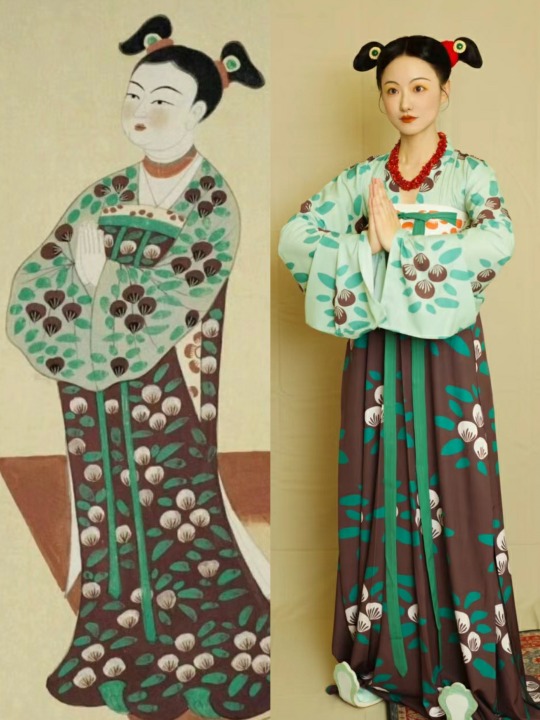

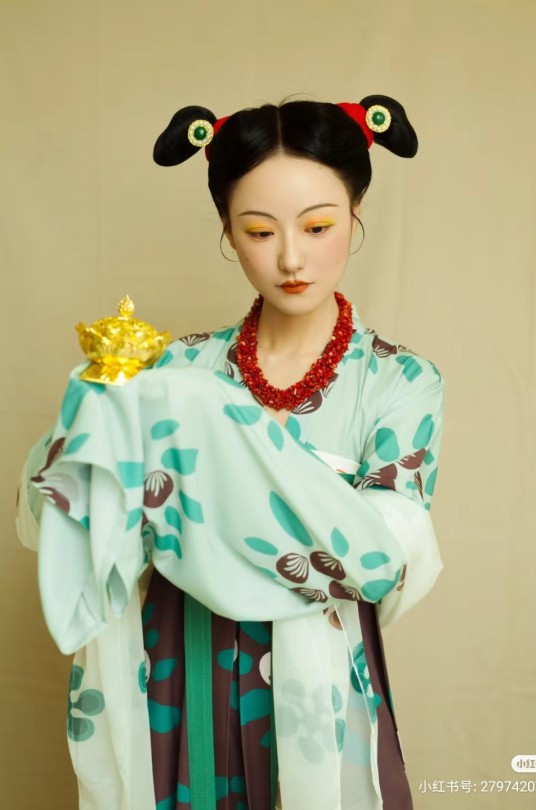
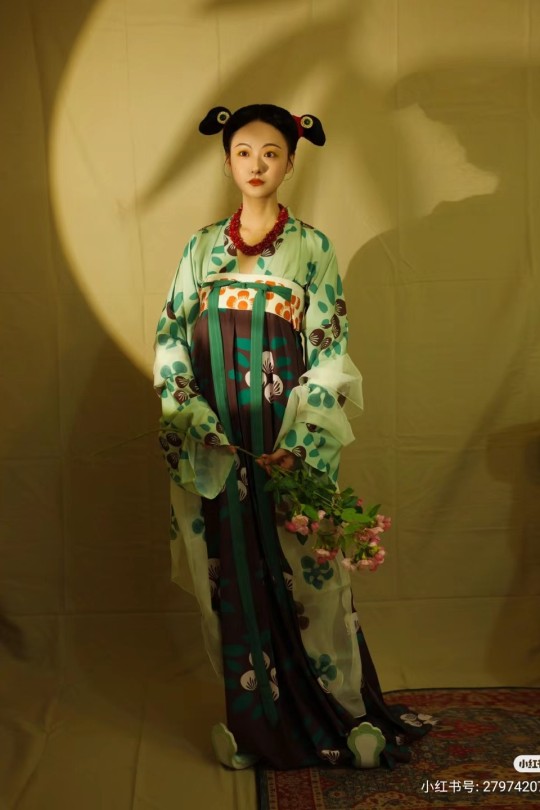

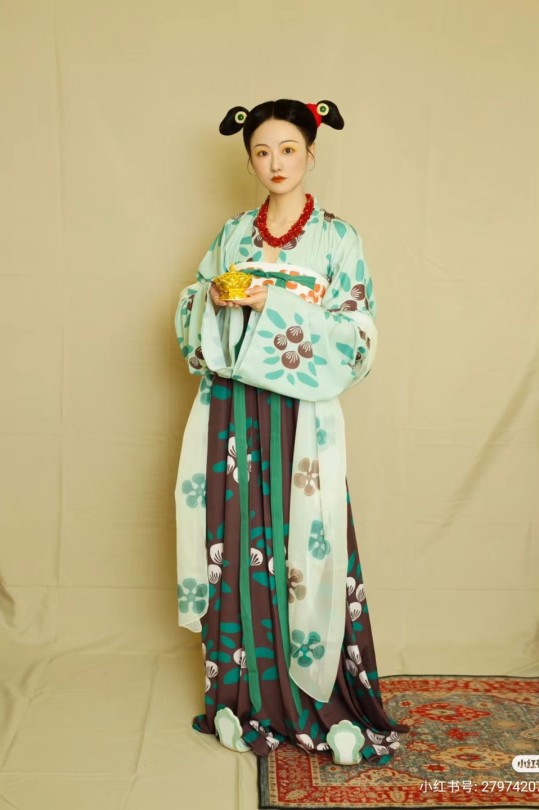

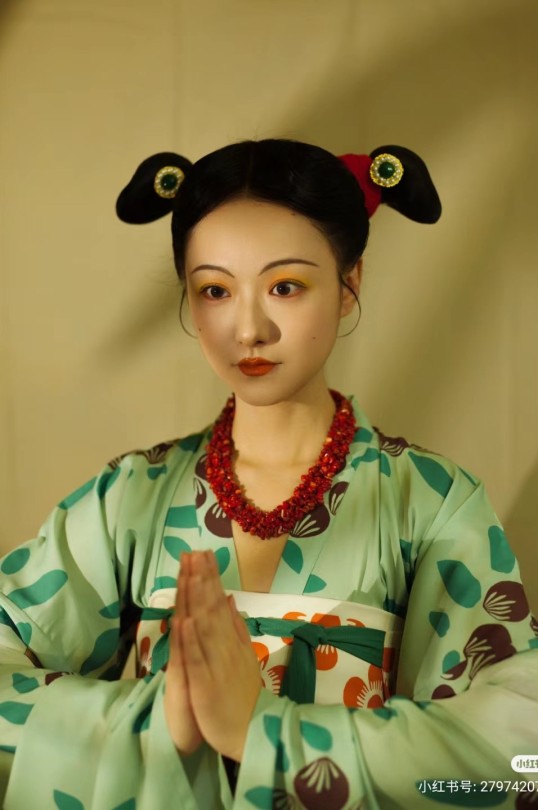


【Historical Artifacts Reference 】:
▶Woman Donor at Murals in Cave 114 of Mogao Grottoes in Dunhuang China

————————
📸Photo:@摄影师梁咩咩
👗Hanfu: 青泠谷
🧚🏻Model&💄Stylist:@张小花
Post-production: @张小花
🔗Weibo:http://xhslink.com/XzpEhG
————————
#chinese hanfu#Tang Dynasty(618–907AD)#hanfu#hanfu accessories#hanfu_challenge#chinese traditional clothing#china#chinese#hanfu history#漢服#汉服#中華風#china history#historical fashion#history
201 notes
·
View notes
Text
[Hanfu · 漢服]Chinese Eastern Han Dynasty (25–220 A.D.) Traditional Clothing Hanfu Photoshoot<神女之江/River of Goddess>
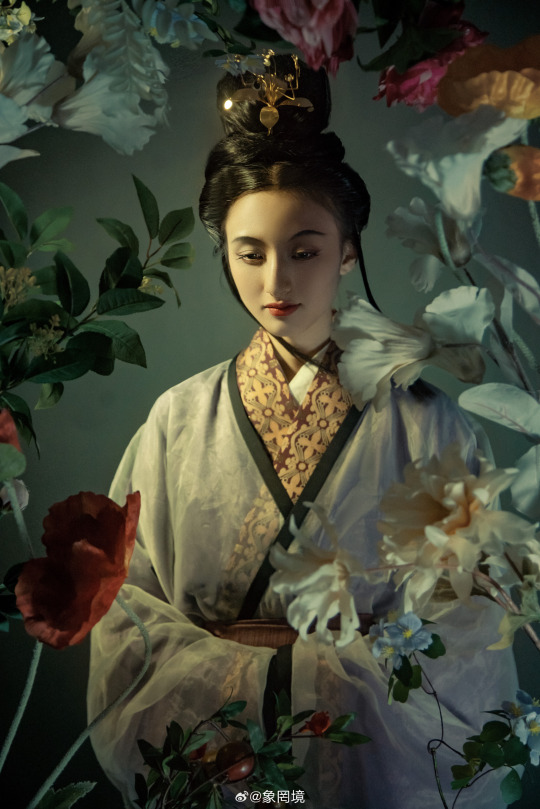

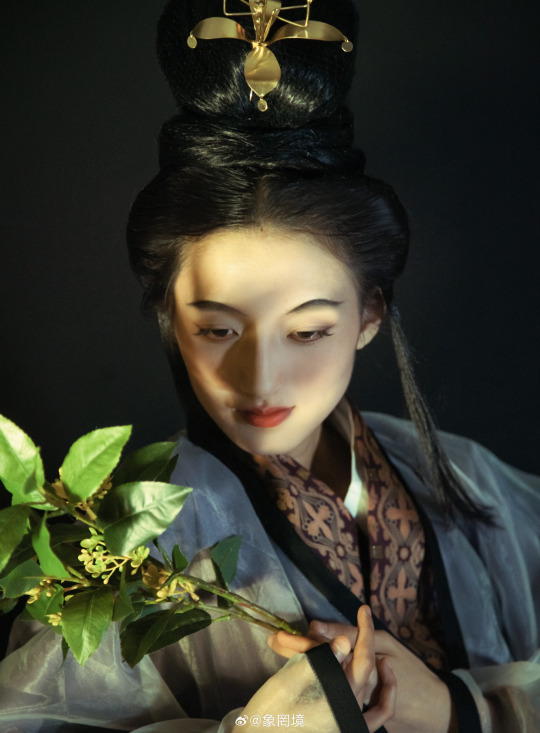






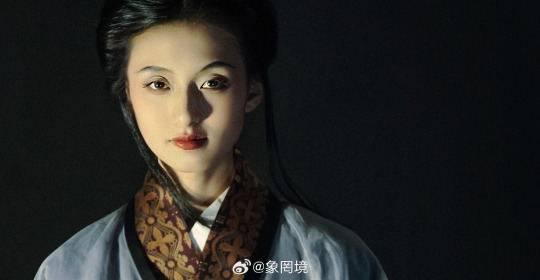

________________
📸Photo:@象罔境
🙋♂️Model:乐子
🔗Weibo:https://weibo.com/2825602213/NCohBj9nd
________________
#chinese hanfu#Eastern Han Dynasty (25–220 A.D.)#hanfu#hanfu accessories#hanfu_challenge#china#chinese traditional clothing#chinese#漢服#汉服#中華風#china history#historical fashion#象罔境
156 notes
·
View notes
Text
[Hanfu · 漢服]Chinese immortal Hanfu <西王母/Queen Mother of the West> Based On Yuan Dynasty Taoist Temple Mural<永乐宫/Yongle Palace>
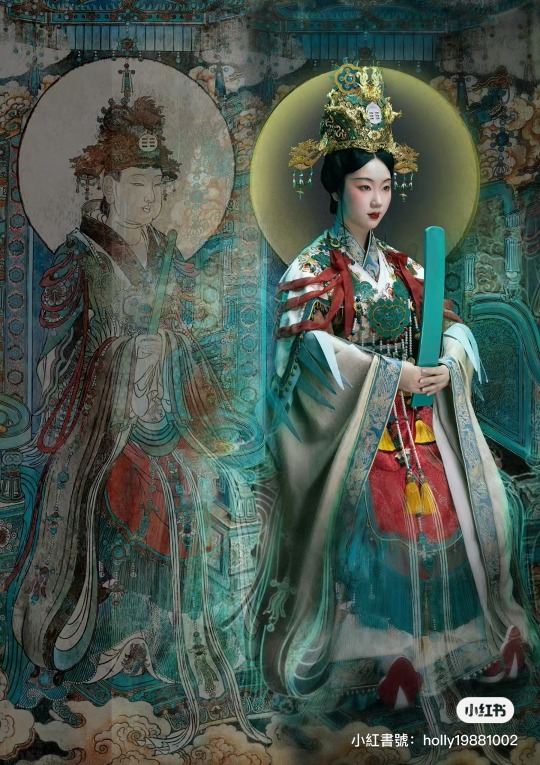
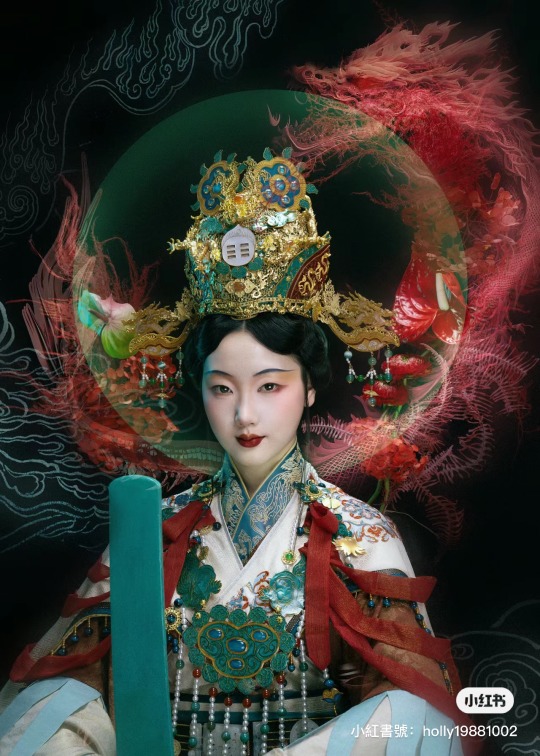
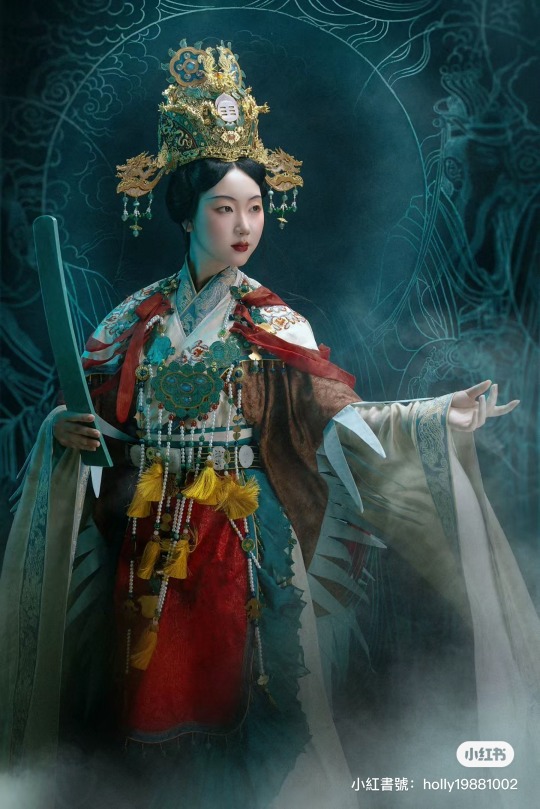
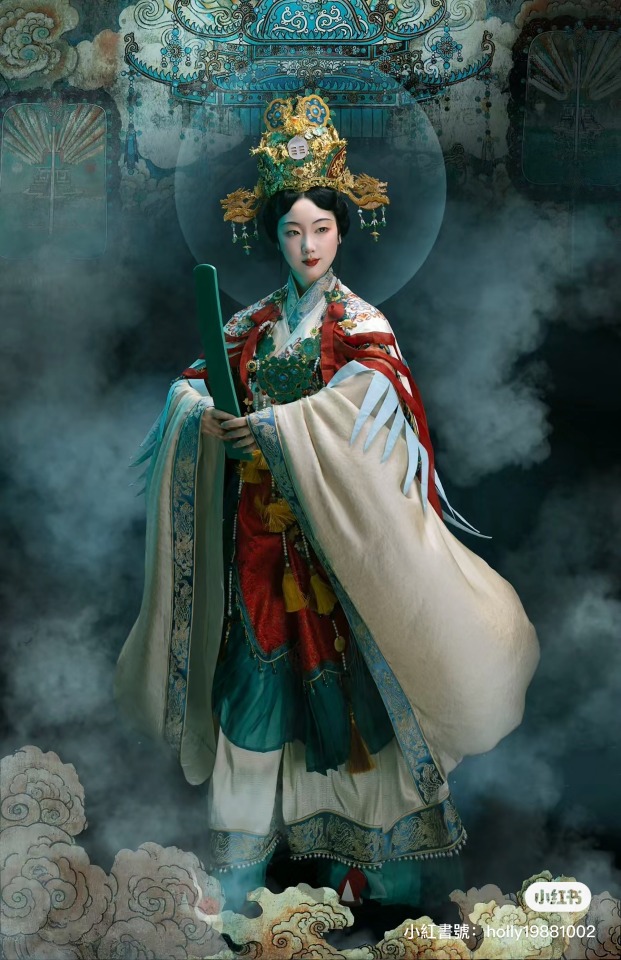
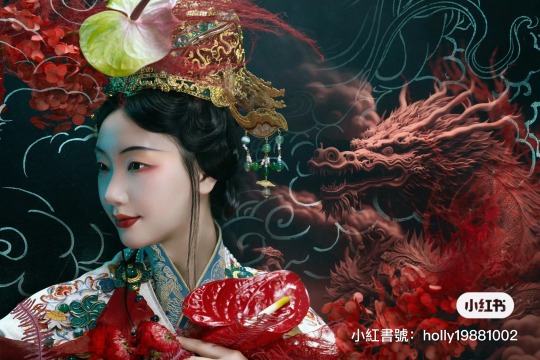
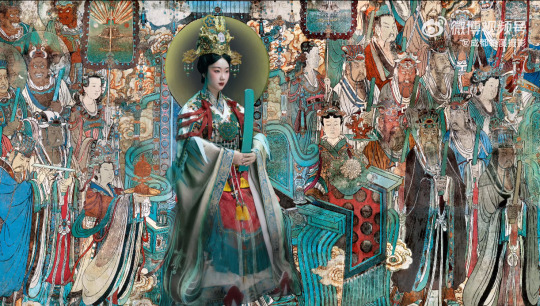
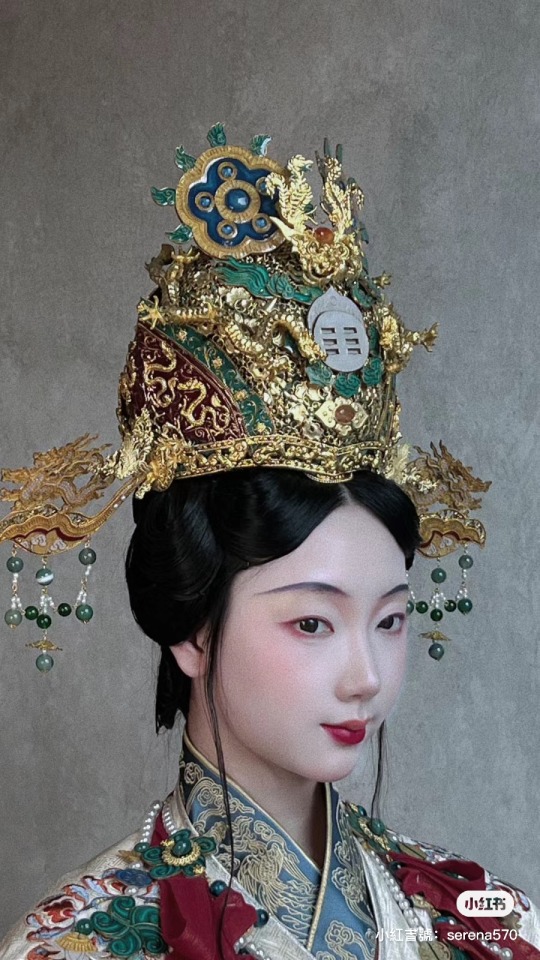
【Historical Artifacts Reference 】:
▶ China Yuan Dynasty Taoist Temple 永乐宫/Yongle Palace Mural


<西王母/Queen Mother of the West>
The Queen Mother of the West, known by various local names, is a mother goddess in Chinese religion and mythology, also worshipped in neighbouring Asian countries, and attested from ancient times.
The first mentions of the Queen Mother date back to the oracle bone inscriptions of the Shang dynasty (1766 – 1122 BCE).
One inscription reads:
Crack-making on day IX (9th day), we divined. If we make offering to the eastern mother and the western mother, there will be approval.
Western Mother refers to an archaic divinity residing in the west. The exact nature of the Mother divinities in the Shang dynasty is unclear, but they were seen as powerful forces deserving of ritual by the people of the Shang dynasty.
Originally, from the earliest known depictions of her in accounts like the Classic of Mountains and Seas during the Zhou dynasty, she was a ferocious goddess of death with the teeth of a tiger, who rules over wild beasts and sends down heavenly punishments such as pestilences. She was also mentioned as an authority ruling over other divinities such as Jiutian Xuannü, a goddess of war and sex.
Other stories hold that she is a mountain goddess or a divine tigress. She is also popularly thought to have blessed the Eight Immortals with their supernatural abilities.
After her integration into the Taoist pantheon, she gradually took on associations with other aspects, such as immortality, as well.
The Queen Mother of the West is most often depicted holding court within her palace on the mythological Mount Kunlun, usually supposed to be in western China (a modern Mount Kunlun is named after this). Her palace is believed to be a perfect and complete paradise, where it was used as a meeting place for the deities and a cosmic pillar where communications between deities and humans were possible.At her palace she was surrounded by a female retinue of prominent goddesses and spiritual attendants. One of her symbols is the Big Dipper.
Although not definite there are many beliefs that her garden had a special orchard of longevity peaches which would ripen once every three thousand years,others believe though that her court on Mount Kunlun was nearby to the orchard of the Peaches of Immortality. No matter where the peaches were located, the Queen Mother of the West is widely known for serving peaches to her guests, which would then make them immortal. She normally wears a distinctive headdress with the Peaches of Immortality suspended from it.
Flourishing parasols, we reach the chronograms' extremity;
Riding on the mist, I wander to Lofty Whirlwind Peak.
The Lady of the Supreme Primordial descends through jade interior doors;
The Queen Mother opens her Blue-gem Palace.
Celestial people—What a Crowd!
A lofty meeting inside the Cyan Audience Hall.
Arrayed Attendants perform Cloud Songs;
Realized intonations fill the Grand Empty Space.
Every thousand years, her purple crabapple ripens;
Every four kalpas, her numinous melon produces abundantly.
This music differs from that at the feast in the wilderness—
So convivial, and certainly infinite.— Wu Yun (Complete Tang Poems 1967, line 4942)
One of the earliest written references to the Queen Mother comes from the writings of the Taoist writer Zhuangzi (c. 4th century BCE):
The Queen Mother of the West obtained it [the Dao]... ...and took up her seat at Shao kuang. No one knows her beginning; no one knows her end.
Zhuangzi describes the Queen Mother as one of the highest of the deities, meaning she had gained immortality and celestial powers. Zhuangzi also states that Xiwangmu is seated upon a spiritual western mountain range, suggesting she is connected to not only the heavens, but also to the west.
Legendary encounters
In Tu Kuang-ting's text, he includes narrative accounts of the Queen Mother's encounters with legendary Chinese heroes. One such account narrates an encounter between the Queen Mother and Laozi (Lord Lao):
"In the 25th year of King Chao of the Chou dynasty (1028 BCE) …"
"…Lord Lao and the realized person Yin Hsi went traveling…"
"…on their behalf, the Queen Mother of the West explicated the Scripture of Constant Purity and Quiet."
In this account, the Queen Mother plays the role of Laozi's superior and is credited with the ultimate authorship of the Dao De Jing. This dichotomy of the Queen Mother as the superior is a characteristic of Shangqing Taoism, a goddess worshiping sect of Taoism of which Tu Kuang-ting was a master. There is also an account of a meeting between the Queen Mother and Laozi in Tang poetry.[18] This account however, being of traditional Taoist thought, has the Queen Mother taking an inferior role to Laozi, calling him "Primordial Lord" (the title of his highest manifestation) and pays homage to the sage.

<China Han Dynasty stone-relief showing 西王母/Queen Mother of the West from Sichuan,China>

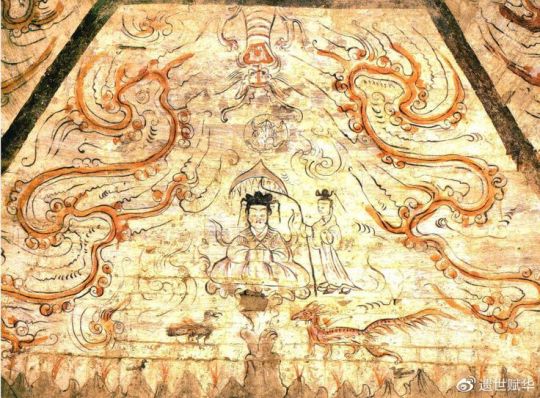
<China Wei and Jin Dynasties Mural showing 西王母/Queen Mother of the West>
————————
📸Photography post-production :@小何力
👗Hanfu & 👑Crown:@雁鸿Aimee
💄 Makeup:百丽 (临溪摄影)
👭Model:@清音音音音
🔗 Weibo:https://weibo.com/1648616372/O2R5bpBud
————————
#chinese hanfu#immortal hanfu#西王母/Queen Mother of the West#Chinese mythology#hanfu#hanfu accessories#hanfu_challenge#chinese traditional clothing#china#chinese#chinese history#china history#漢服#汉服#中華風#小何力#雁鸿Aimee#永乐宫/Yongle Palace
228 notes
·
View notes
Text
[Hanfu · 漢服]Chinese Tang Dynasty(618–907AD)Traditional Clothing Hanfu Photoshoot
渺万里层云,千山暮雪
山茶花开时,春却未归


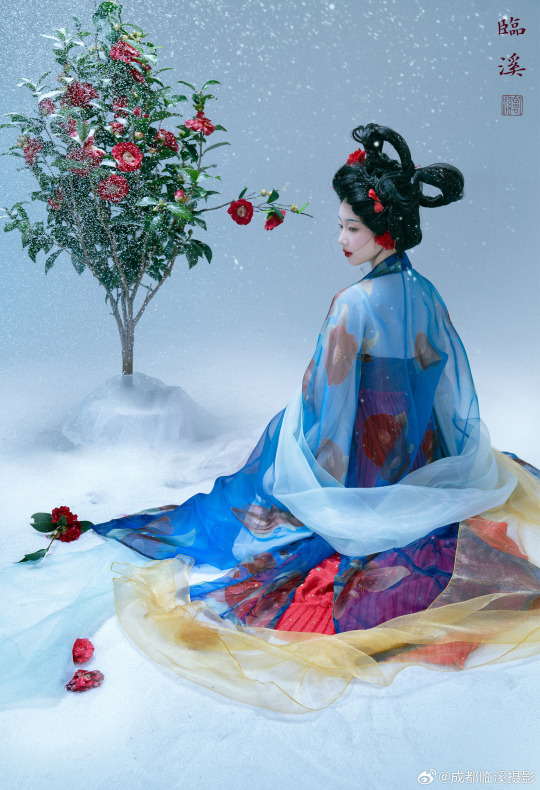

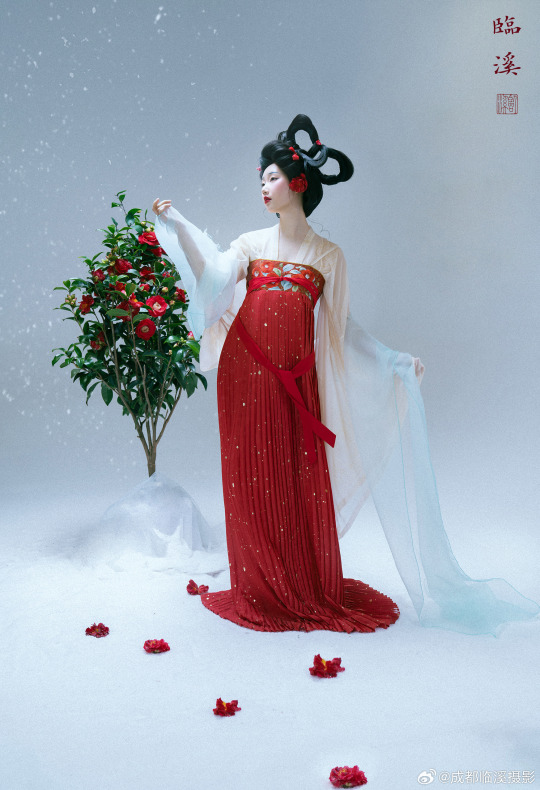

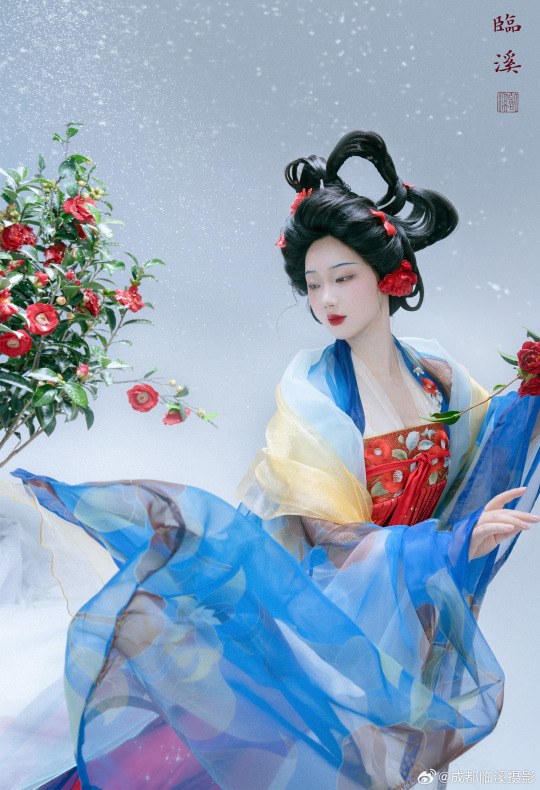


————————
📸Photo:何力
🧚🏻Model :@清音音音音
👗Hanfu: @一殊汉服
💄Stylist:百丽 熊熊
🔗Weibo:https://weibo.com/1648616372/NFBtOFiHc
————————
#chinese hanfu#Tang Dynasty(618–907AD)#hanfu#hanfu accessories#hanfu_challenge#chinese traditional clothing#china#chinese#ancient china#chinese historical fashion#漢服#汉服#hanfu photoshoot#齊胸衫裙 qixiong shanqun
133 notes
·
View notes
Text
[Hanfu · 漢服]Chinese Ming Dynasty(1368-1644 AD) Hanfu Based On Ming Dynasty Painting & Heritage
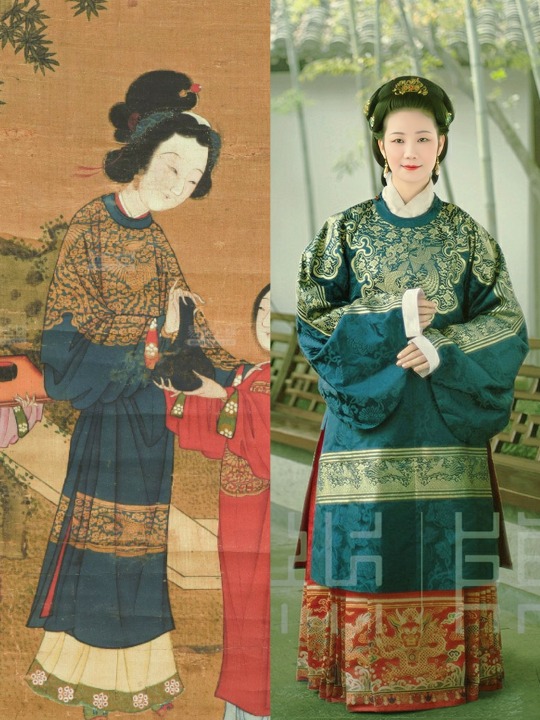
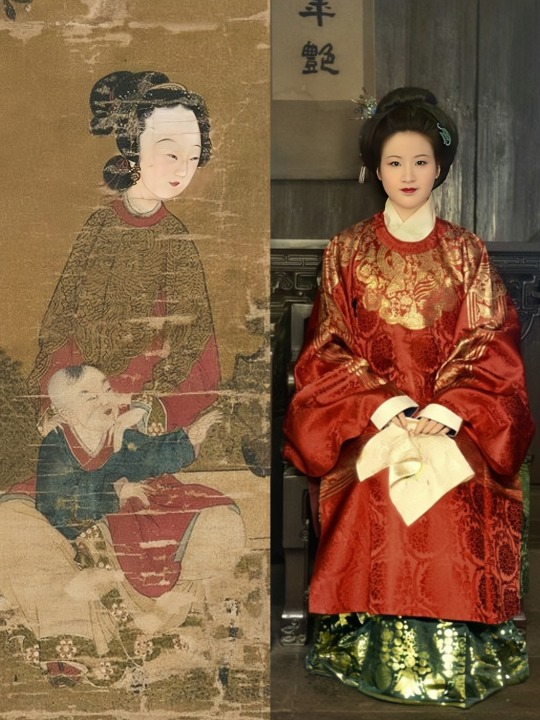

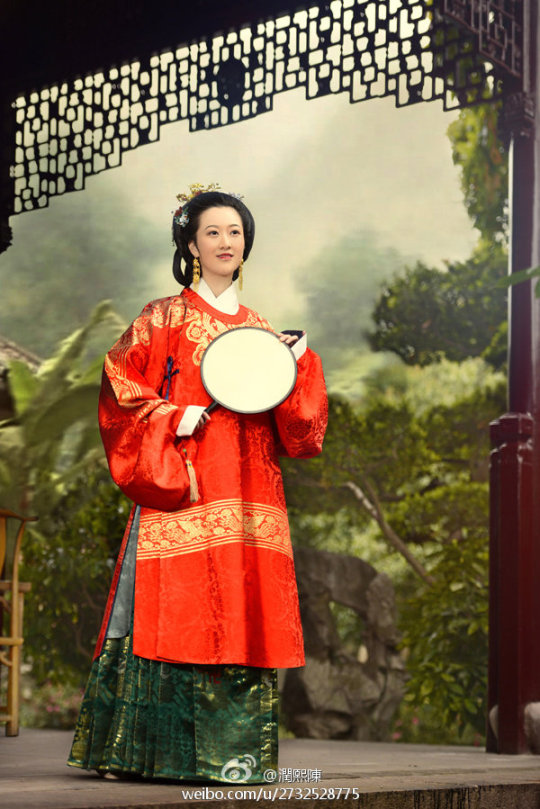






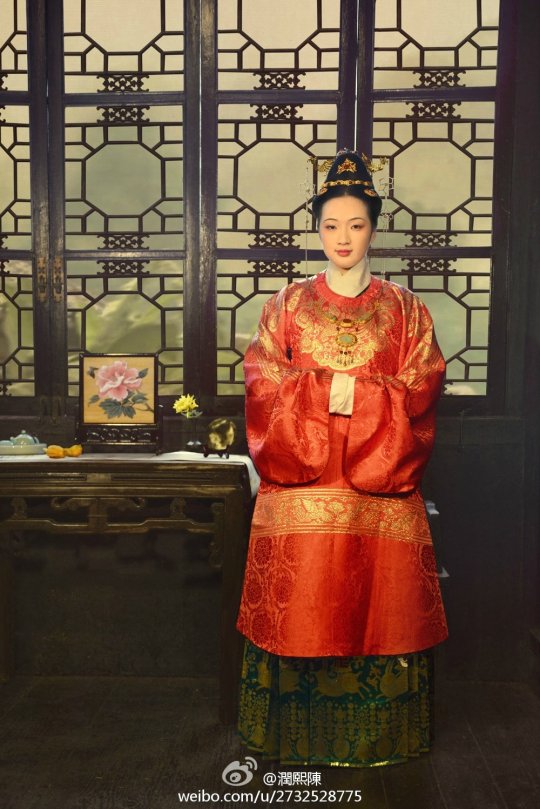

【Historical Artifacts Reference 】:
▶China Ming Dynasty Painting<The Beauty/仕女圖>,
Attributed to Tang Yin
唐寅(款)仕女圖

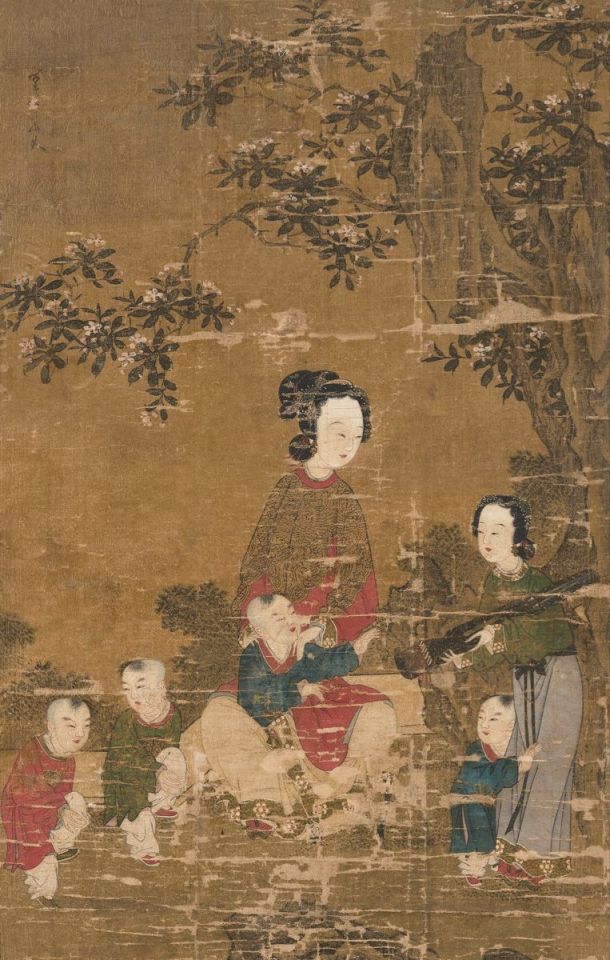
▶ China Ming Dynasty Hanfu Relics<绿罗织金凤纹袍/Green Luo Weave Gold Phoenix Gown>
Collection of Shandong Museum
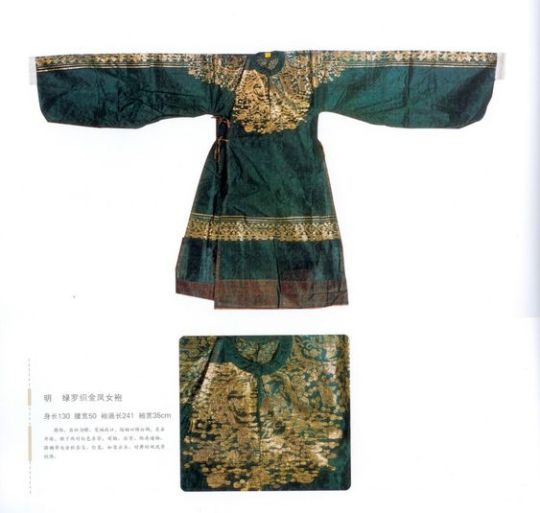
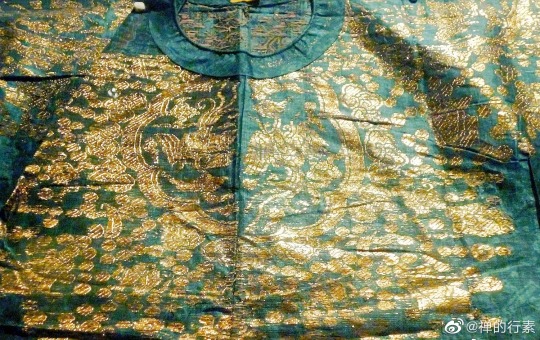
▶China Ming Dynasty Tomb of the Yueshan family in Zhixian,unearthed in 2004.
The picture shows the hostess of Tomb 1 wearing a gold-woven Di bird(翟鸟)robe
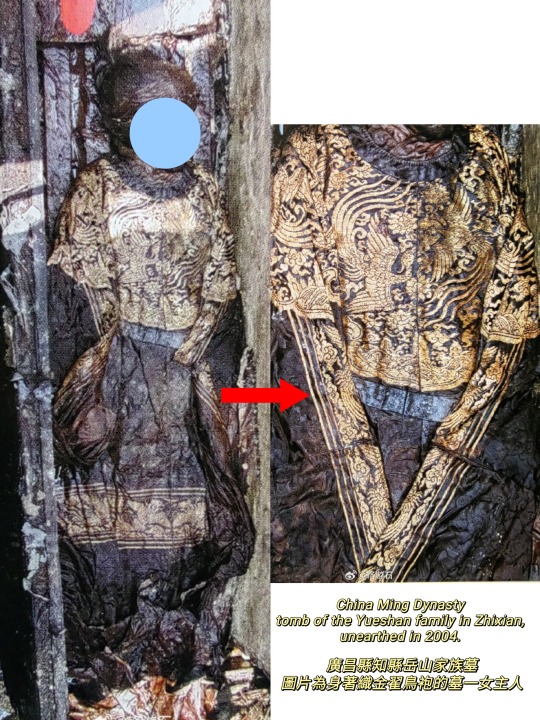
________________________________
Photo@潤熙陳(Weibo)
🔗 Weibo:https://weibo.com/2732528775/zxag2hdbh
________________________________
#chinese hanfu#ming dynatsy#hanfu#hanfu accessories#hanfu_challenge#chinese traditional clothing#china#chinese#Tang Yin#唐寅#hanfu historical relic#hanfu history#china historical fashion#chinese history
167 notes
·
View notes
Text
[Hanfu · 漢服]Chinese Historical immortal Hanfu Based On Yuan Dynasty Taoist Temple Mural<永乐宫/Yongle Palace>
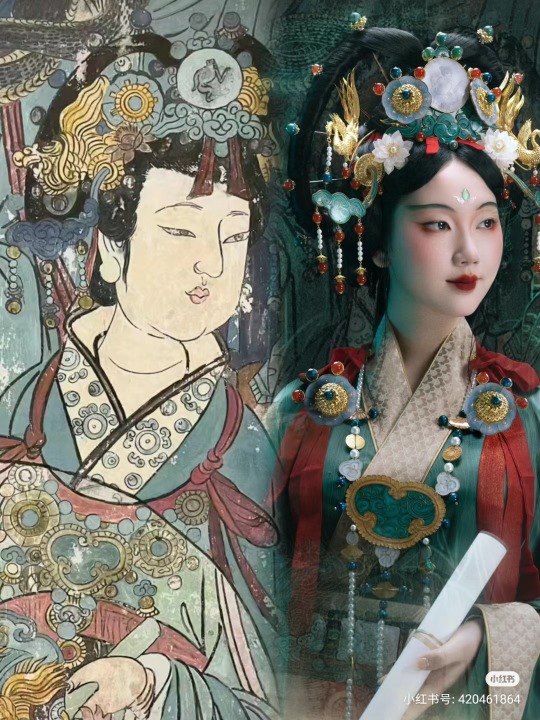
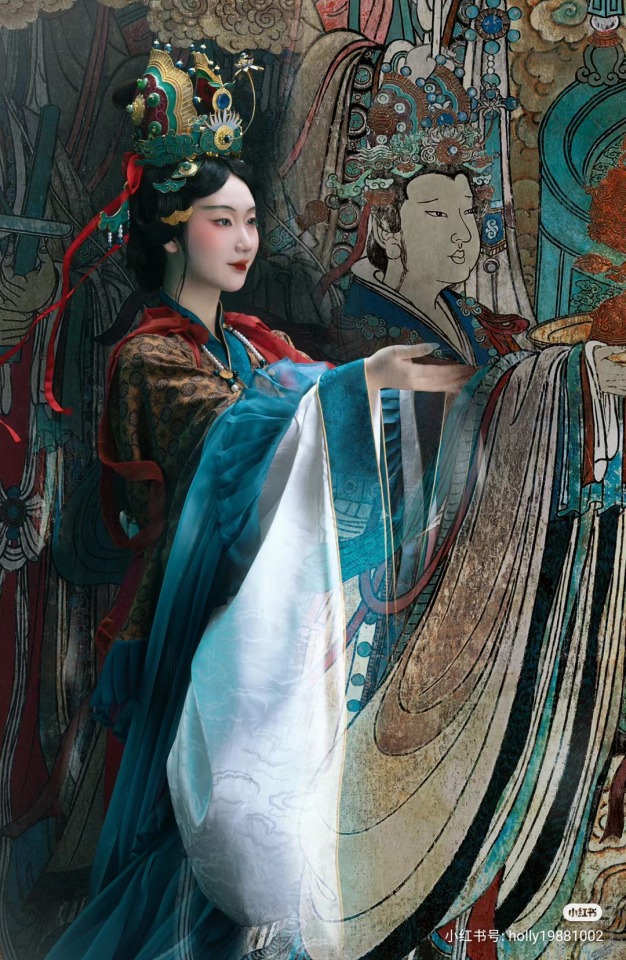
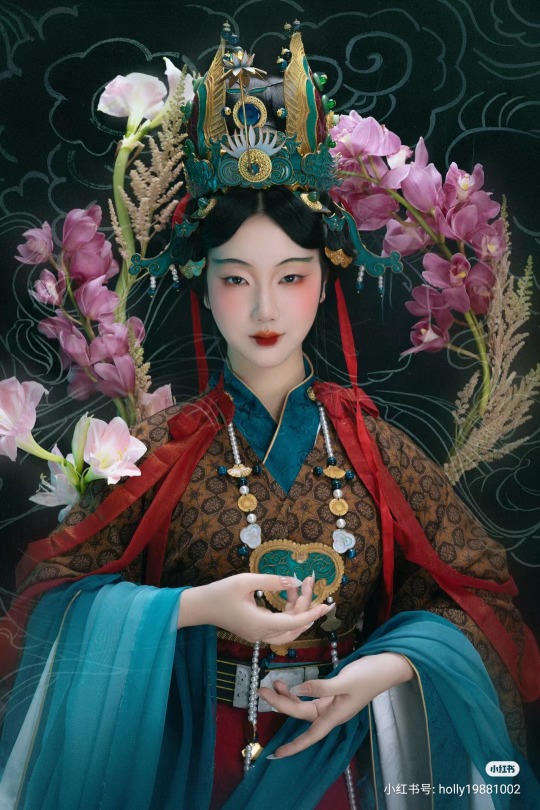

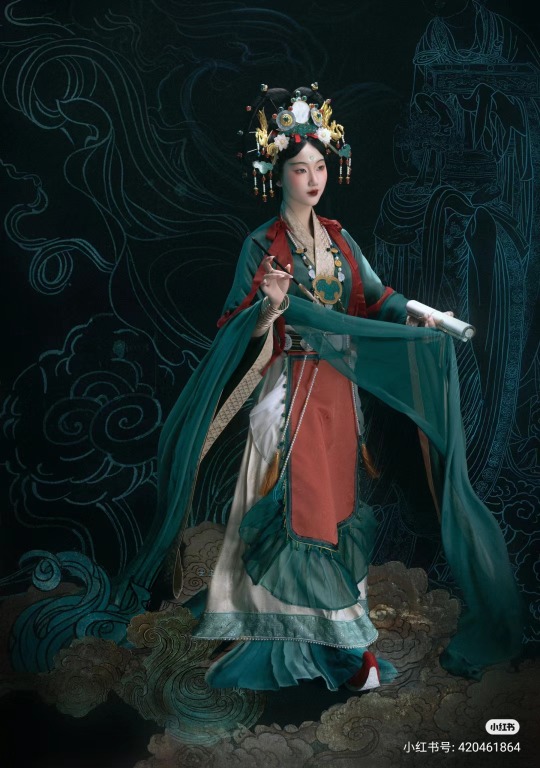



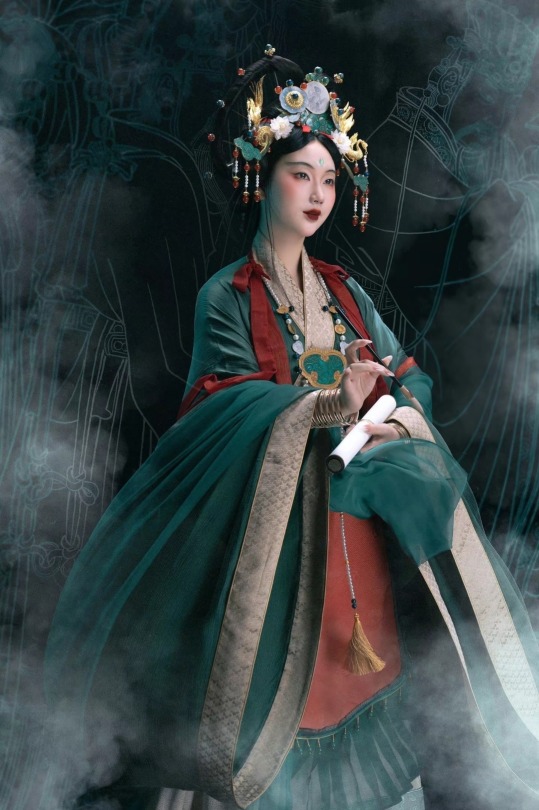





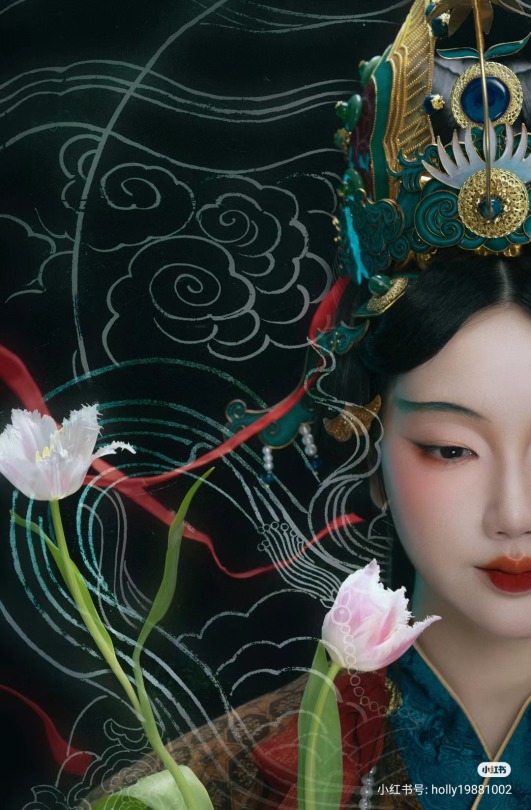


【Historical Artifacts Reference 】:
▶ China Yuan Dynasty Taoist Temple 永乐宫/Yongle Palace Mural
<水星神>:The "Statue of Water Stars God" is located among the gods on the east wall of the north wall of the Sanqing Hall of Yongle Palace. It is one of the five elements of Taoist statues of Water Stars God. According to Taoist norms, Water Stars is a female statue of a scribe wearing an ape crown. It belongs to the monkey god of the zodiac and is used as a written document.

<奉宝玉女>:The immortal attendant who presented the treasure.
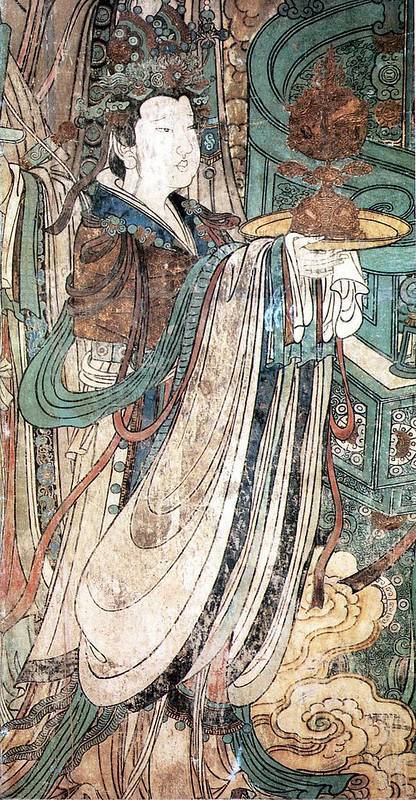
————————
📸Photography post-production :@小何力
👗Hanfu:@雁鸿Aimee
💄 Makeup:百丽 (临溪摄影)
👭Model:@清音音音音
🔗 Weibo:https://weibo.com/1615560544/NDD5YEY5x
————————
#chinese hanfu#hanfu#immortal hanfu#hanfu accessories#chinese traditional clothing#hanfu_challenge#china#chinese#永乐宫/Yongle Palace#漢服#汉服#中華風#taoism#immortal#小何力#清音音音音
401 notes
·
View notes
Text
[Hanfu · 漢服]The relationship between women in history is not just love rivals,
“but also thousands of years later, everyone knows that it is me and you.”
Let's get to know about them/她们 in China history.
1.【Han Dynasty】:Princess Jieyou (解忧公主) & Feng Liao (馮嫽)
Princess Jieyou (Chinese: 解忧公主; 121 BC – 49 BC), born Liu Jieyou (Chinese: 刘解忧), was a Chinese princess sent to marry the leader of the Wusun kingdom as part of the Western Han Chinese policy of heqin(和亲).
As the granddaughter of the disgraced Prince Liu Wu (劉戊) who had taken part in the disastrous Rebellion of the Seven States,her status was low enough that she was sent to replace Princess Liu Xijun (劉細君) after her untimely death and marry the Wusun king Cunzhou (岑陬).
Jieyou lived among the Wusun for fifty years and did much work to foster relations between the surrounding kingdoms and the Han. She was particularly reliant upon her attendant, Feng Liao, whom she dispatched as an emissary to Wusun kingdoms and even to the Han Court. She faced opposition from pro-Xiongnu members of the Wusun royalty, particularly Wengguimi’s Xiongnu wife. When word came that the Xiongnu planned to attack Wusun, she convinced her husband to send for aid from the Han Emperor. Emperor Wu of Han sent 150,000 cavalrymen to support the Wusun forces and drive back the Xiongnu.
In 51 BCE at the age of 70, Jieyou asked to be allowed to retire and return to the Han. Emperor Xuan of Han agreed and had her escorted back to Chang'an where she was welcomed with honor. She was given a grand palace with servants usually reserved for princesses of the imperial family. In 49 BCE, Jieyou died peacefully.
Feng Liao (馮嫽)
Feng Liao (馮嫽) was China's first official female diplomat,[citation needed] who represented the Han dynasty to Wusun (烏孫), which was in the Western Regions. It was a practice for the Imperial Court to foster alliances with the northern tribes via marriage, and two Han princesses had married Wusun kings.
Feng Liao was the maidservant of Princess Jieyou (解憂公主), who was married off to a Wusun king. Feng herself later married an influential Wusun general, whose good standing with Prince Wujiutu (烏就屠) of the kingdom later proved beneficial to the Han dynasty.
When Prince Wujiutu seized the throne of Wusun in 64 BC, after his father died, there was fear in the Imperial Court of Han that Wujiutu, whose mother was Xiongnu, would allow Wusun to become Xiongnu's vassal.
Zheng Ji, Governor of the Western Regions, recalled that Feng Liao had married into Wusun and with her familiarity of the Wusun customs, she was a prime candidate to persuade Wujiutu to ally his kingdom with Han. Wujiutu acceded and Emperor Xuan of Han (漢宣帝) sent for Feng. He praised her for her judgement and diplomacy, and appointed her as the official envoy to Wusun.
Wujiutu was conferred the title "Little King of Wusun" while his brother, the son by a Han princess, was named "Great King of Wusun". Wusun was divided between the two kings and tensions in that region were eased.
※Xiongnu: Xiongnu: A nomadic tribe that has occupied northern China for a long time. Later it gradually became a state. It harassed the borders of the Han Dynasty for a long time and robbed supplies.
------
With their efforts, the Wusun Kingdom gradually tended to support the Han Dynasty, and the Xiongnu's defeat in China also began.
------
2.【Tang Dynasty】:Shangguan Wan'er(上官婉儿)&Princess Taiping (太平公主)
Shangguan Wan'er/上官婉儿 (664 – 21 July 710) was a Chinese politician, poet, and imperial consort of the Wu Zhou and Tang dynasties. Described as a "female prime minister,"Shangguan rose from modest origins as a palace servant to become secretary and leading advisor to Empress Wu Zetian of Zhou. Under Empress Wu, Shangguan exercised responsibility for drafting imperial edicts and earned approbation for her writing style. She retained her influence as consort to Wu's son and successor, Emperor Zhongzong of Tang, holding the imperial consort rank of Zhaorong (昭容). Shangguan was also highly esteemed for her talent as a poet.Shangguan was also highly esteemed for her talent as a poet. In 710, after Emperor Zhongzong's death, Shangguan was killed during a palace coup that ended the regency of Empress Dowager Wei.
Princess Taiping (太平公主)lit. "Princess of Great Peace", personal name unknown, possibly Li Lingyue (李令月) (after 662 – 2 August 713) was a royal princess and prominent political figure of the Tang dynasty and her mother Wu Zetian's Zhou dynasty. She was the youngest daughter of Wu Zetian and Emperor Gaozong and was influential during the reigns of her mother and her elder brothers Emperor Zhongzong and Emperor Ruizong (both of whom reigned twice), particularly during Emperor Ruizong's second reign, when for three years until her death, she was the real power behind the throne.
She is the most famous and influential princess of the Tang dynasty and possibly in the whole history of China thanks to her power, ability and ambition. She was involved in political difficulties and developments during the reigns of her mother and brothers. Indeed, after the coup against Empress Dowager Wei, she became the real ruler of Tang. During the reign of Emperor Ruizong, she was not restricted by anything, the emperor issued rulings based on her views and the courtiers and the military flattered her and majority from every civil and military class joined her faction, so her power exceeded that of the emperor.
Eventually, however, a rivalry developed between her and her nephew, Emperor Ruizong's son, Crown Prince Li Longji. Both of them were hostile in power-sharing and they fought for the monopoly over power. After Emperor Ruizong yielded the throne to Li Longji (as Emperor Xuanzong) in 712, the conflict came to the political forefront, and openly, the court became a manifestation of conspiracy rather than the administration of the empire; in 713, Emperor Xuanzong, according to historical records, believing that she was planning to overthrow him, acted first, executing a large number of her powerful allies and forcing her to commit suicide.
------
The relationship between Shangguan Wan'er and Princess Taiping has always been written as "enemies" in official history, but with the phrase "千年万岁,椒花颂声", their friendship that has been buried for thousands of years was revealed.
The"千年万岁,椒花颂声" sentence comes from the epitaph written by Princess Taiping for Shangguan Wan'er. The original text is: "潇湘水断,宛委山倾,珠沉圆折,玉碎连城。甫瞻松槚,静听坟茔,千年万岁,椒花颂声”
Translation: Now that you are far away, the sky and the earth will lose their color. I'm afraid that all I can do in the future is to sit and look at the tea tree in front of your tomb. Maybe I can hear your voice again when I stand within an inch of the tomb. But this is a delusion after all, a quiet tomb, no beautiful face, a empty place of death. I hope that in a thousand or ten thousand years, there will still be people like me who remember you.
------
3.【Late Qing Dynasty】:Lü Bicheng(呂碧城) & Qiu Jin (秋瑾)
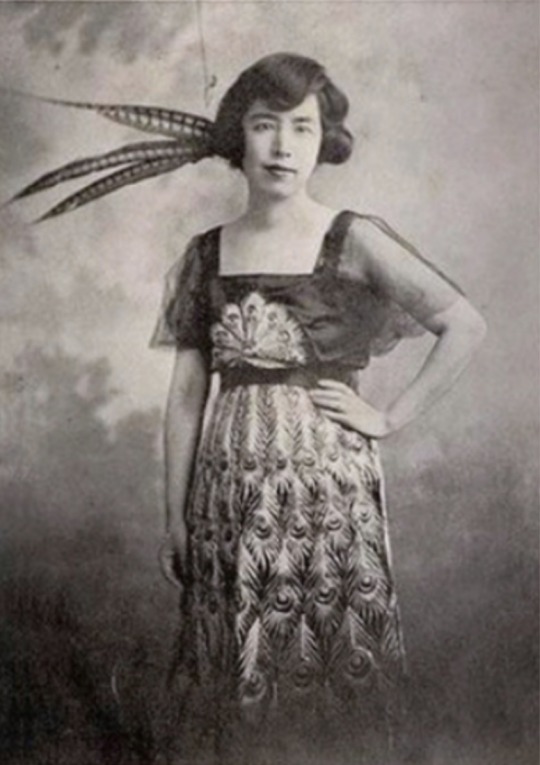
Lü Bicheng(呂碧城)also known as Alice Pichen Lee(1883–1943) was a Chinese writer, activist, newspaper editor, poet and school founder. She has been mentioned as one of the top four women in literature from the early Republic of China.
When she was four, her father retired to Lu'an, Anhui. She lived a life of comfort until the age of 12, when her father died in 1895. Because Lü Fengqi had no male heir, relatives of the Lü lineage contested for his inheritance, and Yan Shiyu and her four daughters were forced to move to Lai'an County to live with her natal family. When she was nine, Lü Bicheng was betrothed to a Wang family, but as her own family fortune declined, the Wang family broke off the marriage contract, giving the young Bicheng the stigma of a "rejected woman". The resulting emotional scar is often considered a major factor in her later decision to never marry.[8] Her widowed mother and the Lü girls were not well treated at the Yan family in rural Anhui. When Lü was 15 or 16, Yan Shiyu sent her to live with her maternal uncle Yan Langxuan (嚴朗軒), who was the salt administrator in Tanggu, the port city outside the northern metropolis of Tianjin. Her sister Huiru also joined her later.
During her stay in Tanggu, Qing China went through the tumultuous period of the failed Hundred Days' Reform of 1898, which brought about increasing awareness of women's education, and the Boxer Rebellion of 1900. In 1904, Mrs. Fang, the wife of her uncle's secretary, invited Lü Bicheng to visit a girls' school in Tianjin, but her uncle prevented her from going and severely reprimanded her. The next day, she ran away from her uncle's home, and took the train to Tianjin with no money or luggage. She wrote a letter to Mrs. Fang, who was staying at the dormitory of the Ta Kung Pao newspaper. Ying Lianzhi, the Catholic Manchu nobleman who founded the newspaper, read the letter and was so impressed by it that he made her an assistant editor. Lü Bicheng wrote a "progressive" ci that she had previously written, set to "A River Full of Red" ("Manjianghong") usually used to express heroic emotions. Ying transcribed the whole song in her diary and published it in L'impartial two days later. At the time, it was sensational for a woman to write for an influential national newspaper such as Ta Kung Pao. She was 21 years old. She used Ta Kung Pao to promote feminism and became a well-known figure.
Lü's ci poetry was published in the newspaper and it was very well received. She was the chief editor of the newspaper from 1904 to 1908. In 1904 she decided to improve education for girls. She had published her thoughts on women's rights and the general editor of the newspaper introduced her to Yan Fu who was an advocate for Western ideas. The Beiyang Women's Normal School was established that same year. At 23 Lü took on the job of principal of the school she had founded two years before. At first this school found it difficult to find girls who qualified for secondary education and students were brought in from Shanghai to make up the numbers.
Lü knew the revolutionary Qiu Jin and they had similar objectives but Lü did not join her in Japan when she was invited as she was unsure whether women should meddle in politics. She was then chosen to be secretary to Yuan Shikai, one of the most powerful people in China. When he set out to declare himself emperor of China she left, like many of his followers, and abandoned him.
--

Qiu Jin (秋瑾)8 November 1875 – 15 July 1907,was a Chinese revolutionary, feminist, and writer.Her sobriquet name is Jianhu Nüxia (Chinese: 鑑湖女俠 lit. 'Woman Knight of Mirror Lake').
Qiu was born into a wealthy family. Her grandfather worked in the Xiamen city government and was responsible for the city's defense. Zhejiang province was famous for female education, and Qiu Jin had support from her family when she was young to pursue her educational interests. Her father, Qiu Shounan, was a government official and her mother came from a distinguished literati-official family. Qiu Jin's wealthy and educated background, along with her early exposure to political ideologies were key factors in her transformation to becoming a female pioneer for the woman's liberation movement and the republican revolution in China.
In the early 1900s, Japan had started to experience western influences earlier than China. As to not fall behind, the Qing government sent many elites to learn from the Japanese. Qiu Jin was one of these elites that got the chance to study overseas. After studying in a women's school in Japan, Qiu returned to China to participate in a variety of revolutionary activities; and through her involvement with these activities, it became clear how Qiu wanted others to perceive her. Qiu called herself 'Female Knight-Errant of Jian Lake' — the role of the knight-errant, established in the Han dynasty, was a prototypically male figure known for swordsmanship, bravery, faithfulness, and self-sacrifice — and 'Vying for Heroism'
Qiu Jin had her feet bound and began writing poetry at an early age. With the support from her family, Qiu Jin also learned how to ride a horse, use a sword, and drink wine—activities that usually only men were permitted to learn at the time.In 1896 Qiu Jin got married. At the time she was only 21, which was considered late for a woman of that time. Qiu Jin's father arranged her marriage to Wang Tingchun, the youngest son of a wealthy merchant in Hunan province. Qiu Jin did not get along well with her husband, as her husband only cared about enjoying himself.While in an unhappy marriage, Qiu came into contact with new ideas. The failure of her marriage affected her decisions later on, including choosing to study in Japan.
While still in Tokyo, Qiu single-handedly edited a journal, Vernacular Journal (Baihua Bao). A number of issues were published using vernacular Chinese as a medium of revolutionary propaganda. In one issue, Qiu wrote A Respectful Proclamation to China's 200 Million Women Comrades, a manifesto within which she lamented the problems caused by bound feet and oppressive marriages. Having suffered from both ordeals herself, Qiu explained her experience in the manifesto and received an overwhelmingly sympathetic response from her readers. Also outlined in the manifesto was Qiu's belief that a better future for women lay under a Western-type government instead of the Qing government that was in power at the time. She joined forces with her cousin Xu Xilin and together they worked to unite many secret revolutionary societies to work together for the overthrow of the Qing dynasty.
Between 1905 and 1907, Qiu Jin was also writing a novel called Stones of the Jingwei Bird in traditional ballad form, a type of literature often composed by women for women audiences. The novel describes the relationship between five wealthy women who decide to flee their families and the arranged marriages awaiting them in order to study and join revolutionary activities in Tokyo. Titles for the later uncompleted chapters suggest that the women will go on to talk about “education, manufacturing, military activities, speechmaking, and direct political action, eventually overthrowing the Qing dynasty and establishing a republic” — all of which were subject matters that Qiu either participated in or advocated for.
Life after returning to China
Qiu Jin was known as an eloquent orator who spoke out for women's rights, such as the freedom to marry, freedom of education, and abolishment of the practice of foot binding. In 1906 she founded China Women's News (Zhongguo nü bao), a radical women's journal with another female poet, Xu Zihua in Shanghai. They published only two issues before it was closed by the authorities. In 1907, she became head of the Datong school in Shaoxing, ostensibly a school for sport teachers, but really intended for the military training of revolutionaries[citation needed]. While teaching in Datong school, she kept secret connection with local underground organization—The Restoration Society. This organization aimed to overthrow the Manchu government and restore Chinese rule.
Death
In 1907, Xu Xilin, Qiu’s friend and the Datong school’s co-founder was executed for attempting to assassinate his Manchu superior. In the same year, the authorities arrested Qiu at the school for girls where she was the principal. She was tortured but refused to admit her involvement in the plot. Instead the authorities used her own writings as incrimination against her and, a few days later, she was publicly beheaded in her home village, Shanyin, at the age of 31. Her last written words, her death poem, uses the literal meaning of her name, Autumn Gem, to lament of the failed revolution that she would never see take place:
秋風秋雨愁煞人
(Autumn wind, autumn rain — they make one die of sorrow)
After Qiu Jin was killed, no one dared to collect her body. Lu Bicheng endured her grief and took great risks to bury her friend. The guarding Qing army learned that the woman who came to collect the corpse was Lu Bicheng, who was famous in China, and they had no choice but to do anything.
Qiu Jin's death caused Lu Bicheng to lose a rare confidant in life. She wrote many poems in memory of Qiu Jin, recalling this like-minded friend.
Later, Lü Bicheng wrote "The Biography of the Revolutionary Heroine Qiu Jin" in English, which was published in newspapers in New York, Chicago and other places in the United States. It caused a great response and not only made many people in the world know about Qiu Jin's legendary story, but also published it in newspapers in New York and Chicago. It also makes people understand the darkness and corrupt social status quo of the Qing Dynasty. Lu Bicheng used a pen of her own to record her friendship with Qiu Jin, and also fulfilled her promise to Qiu Jin to respond with the "battle of words"
————————
📸Video & 🧚🏻 Model:@荷里寒 & @阿时Ashi_
🔗Weibo:https://weibo.com/3618951560/NEZZnpQRq
————————
#chinese hanfu#china history#woman power#woman in history#hanfu#hanfu accessories#hanfu_challenge#chinese traditional clothing#china#chinese#han dynasty#tang dynasty#late qing dynasty#feminism#revolution#漢服#汉服#中華風#girl power#hanfu girl
357 notes
·
View notes
Text
[Hanfu · 漢服]Historical Chinese Style illustration Artist @御茶菓子XINYUE
She is one of my favorite illustrator. She draws inspiration from Chinese cultural relics and history in the creation of characters, and her use of colors is also amazing. Highly recommend her works to everyone.
If u like her work, please follow her on Weibo/Instagram
Instagram:https://www.instagram.com/zzxinyue/
Weibo:https://weibo.com/zzxinyue


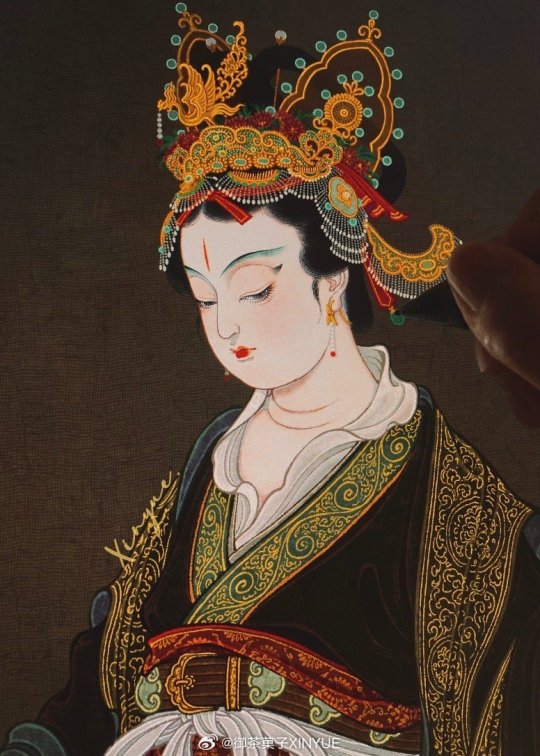

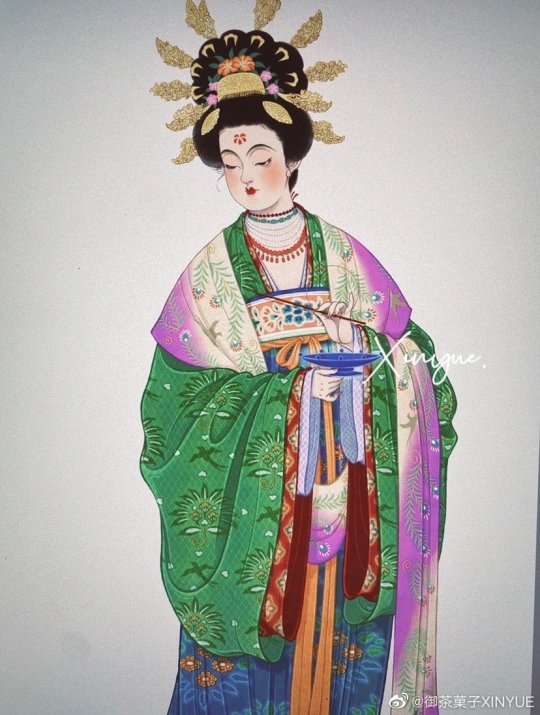
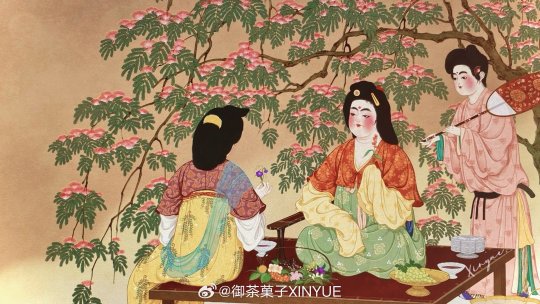
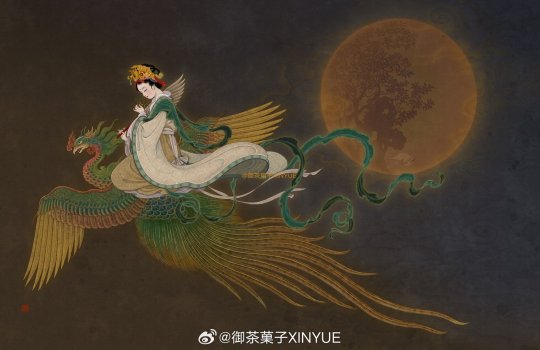
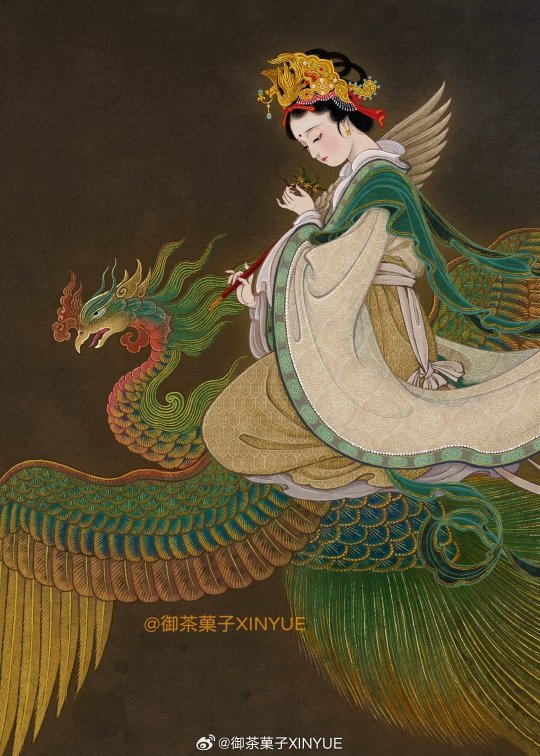
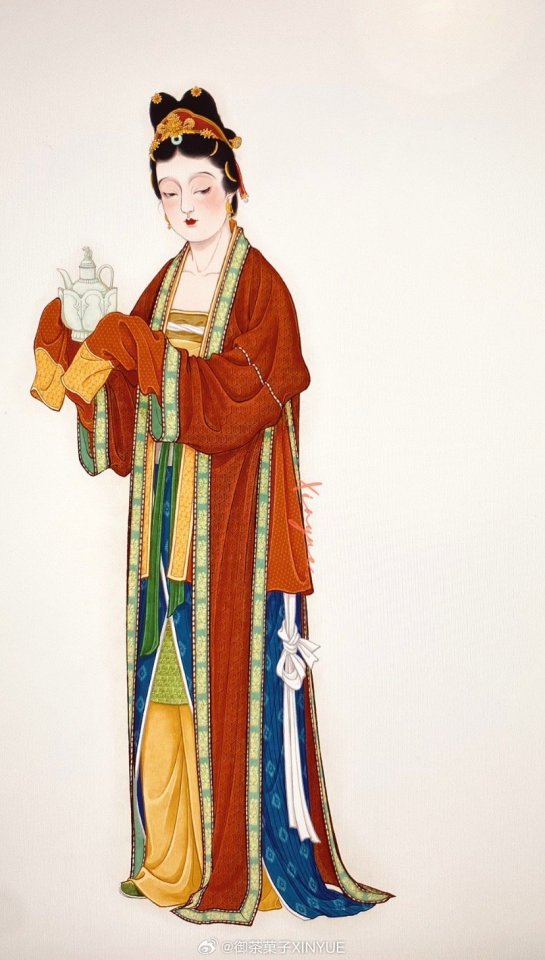
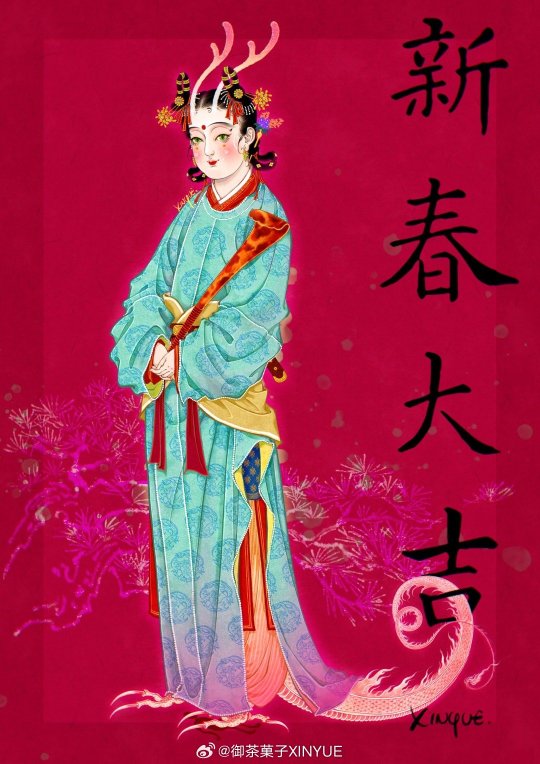
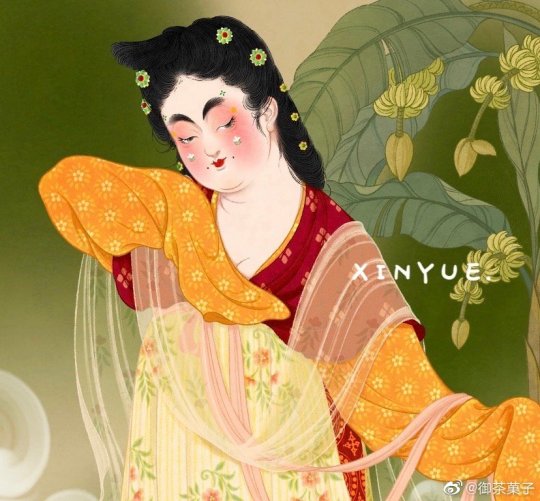
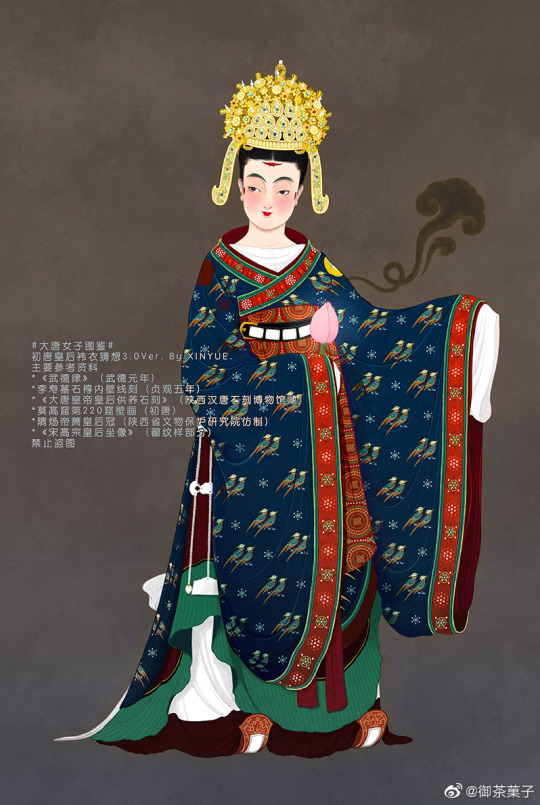

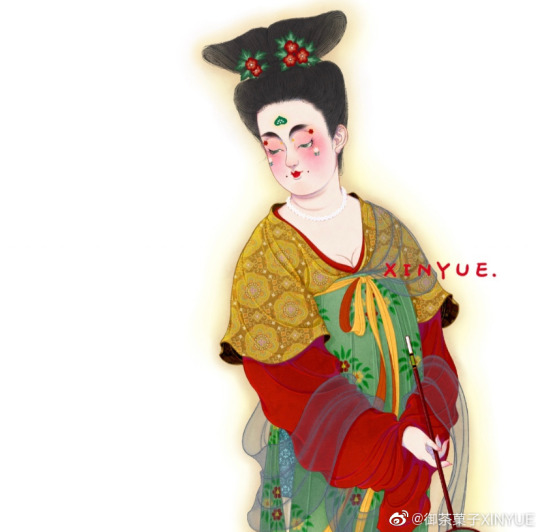
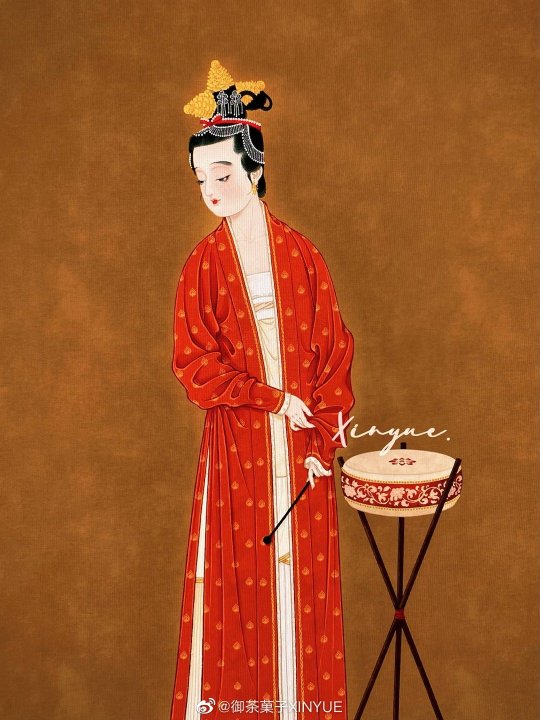

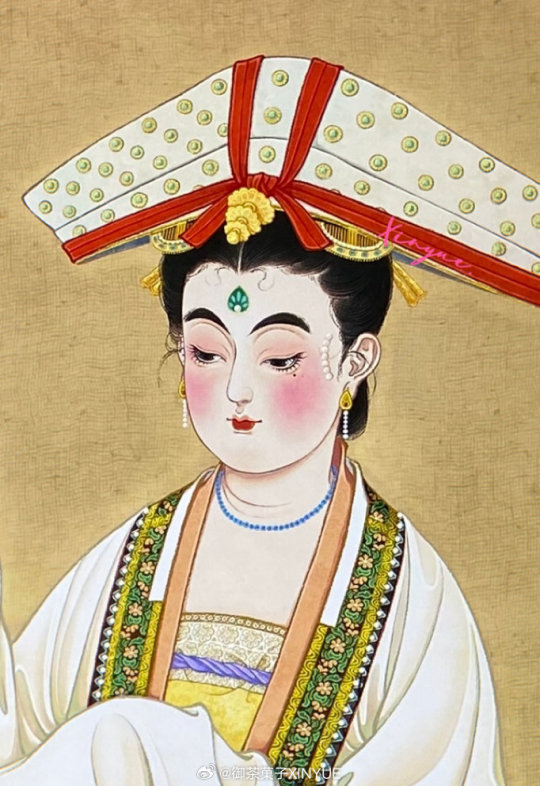
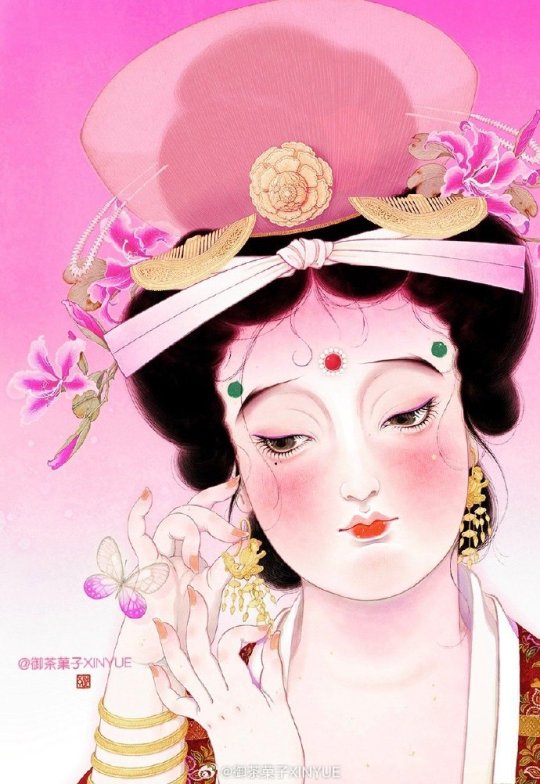
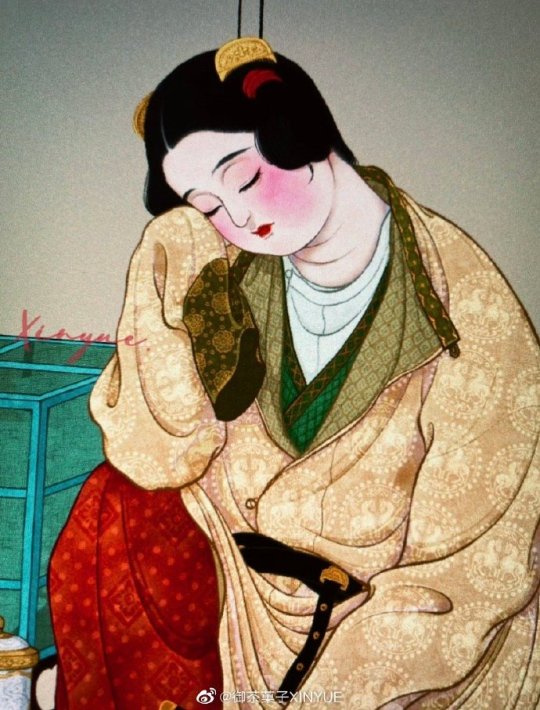
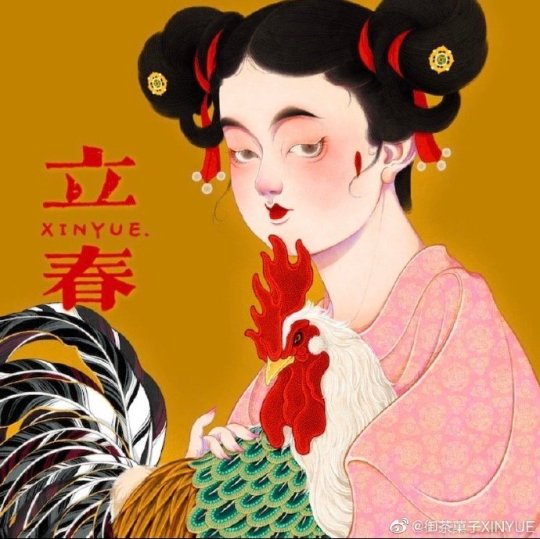



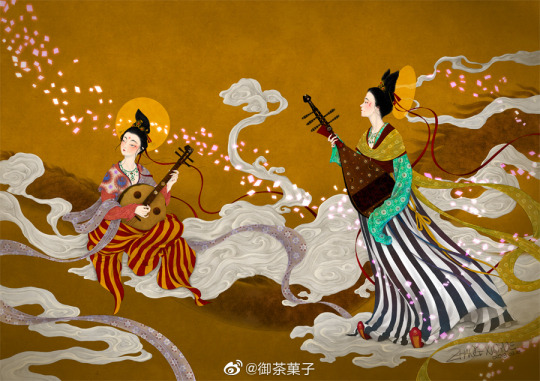
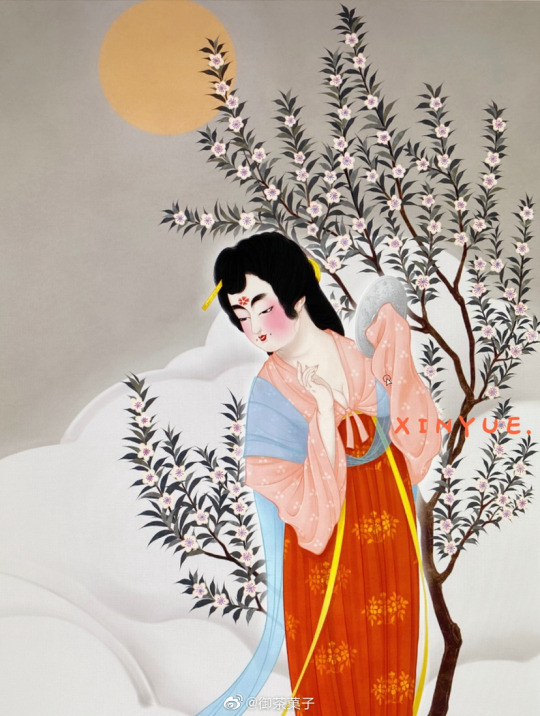

#chinese hanfu#hanfu#hanfu accessories#hanfu_challenge#chinese traditional clothing#china#chinese#御茶菓子XINYUE#hanfu illustration#illustrator#chinese artist#artist recommend#chinese style#漢服#汉服
205 notes
·
View notes
Text
[Hanfu · 漢服]Chinese Eastern Han Dynasty (25–220 A.D.) Traditional Clothing Hanfu with Actor Liu Tao/刘涛


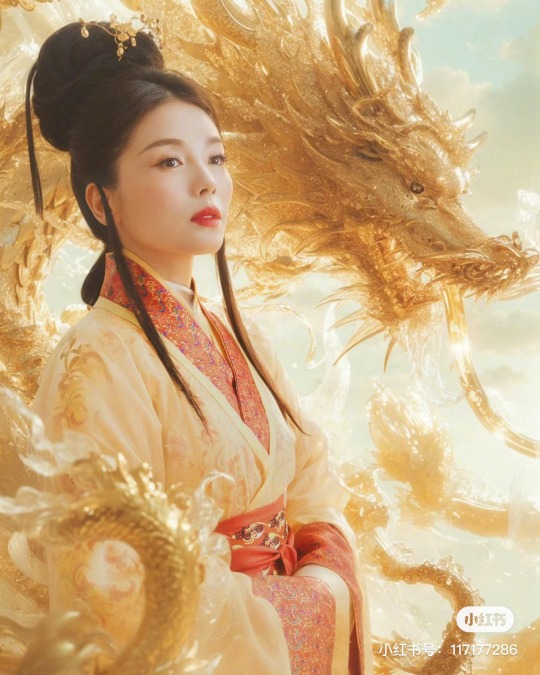
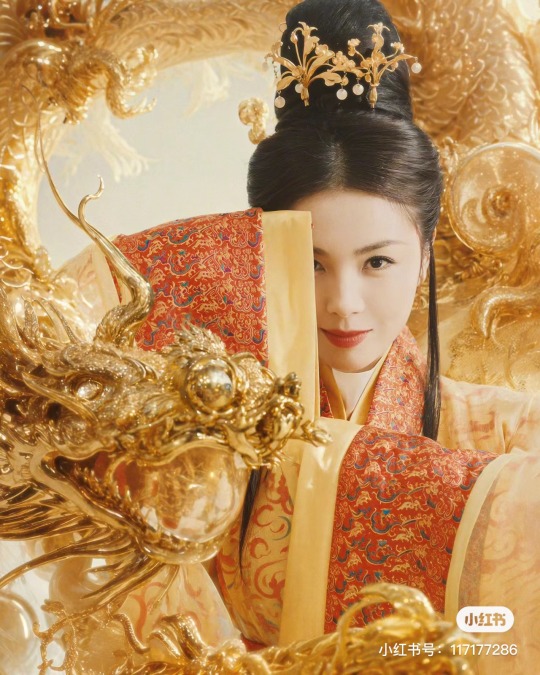



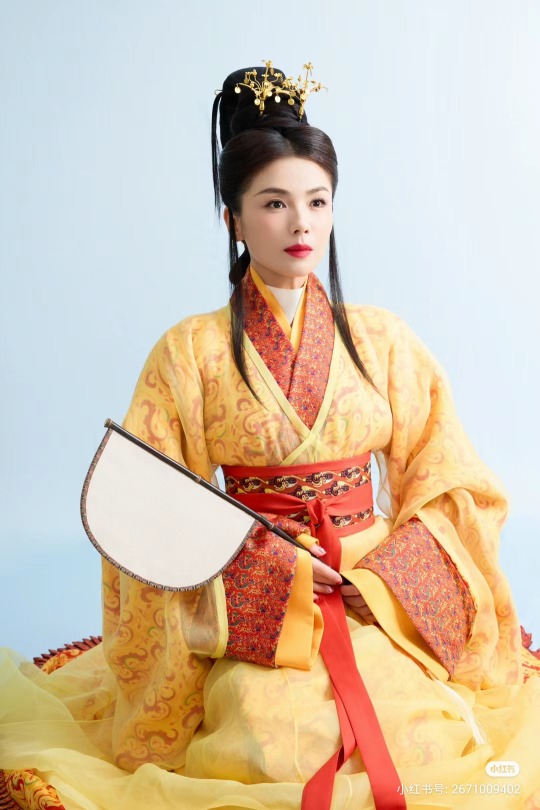

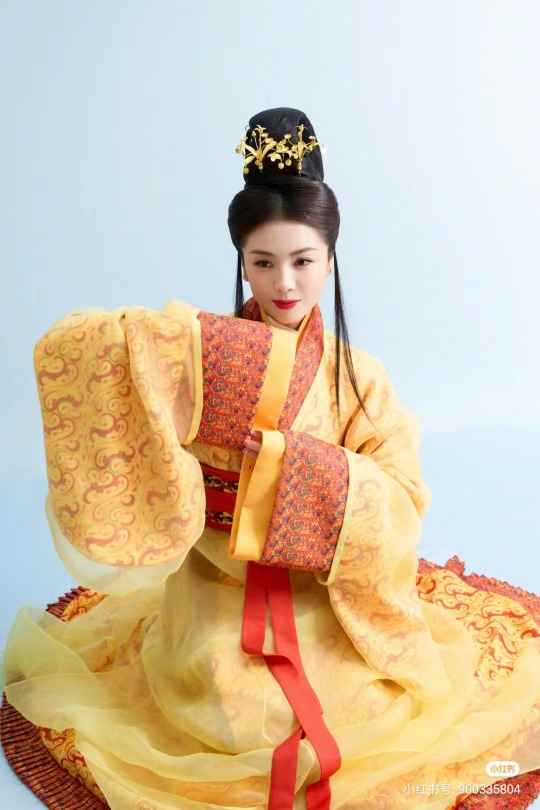

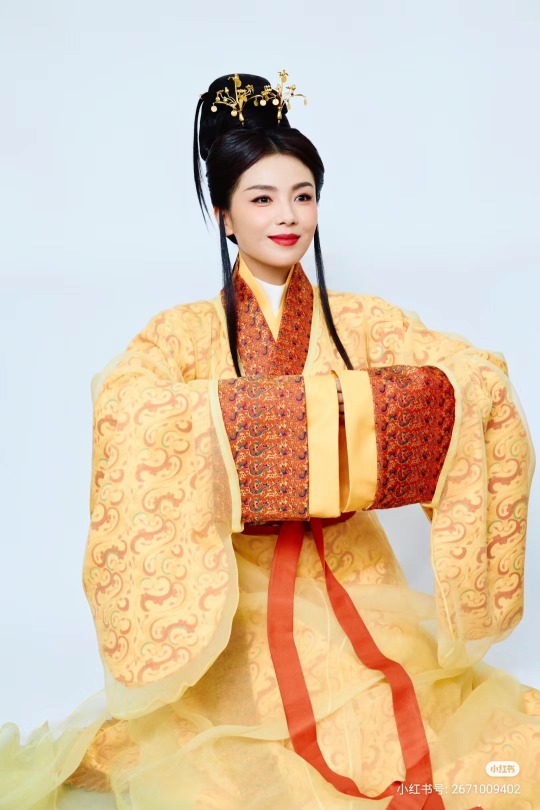
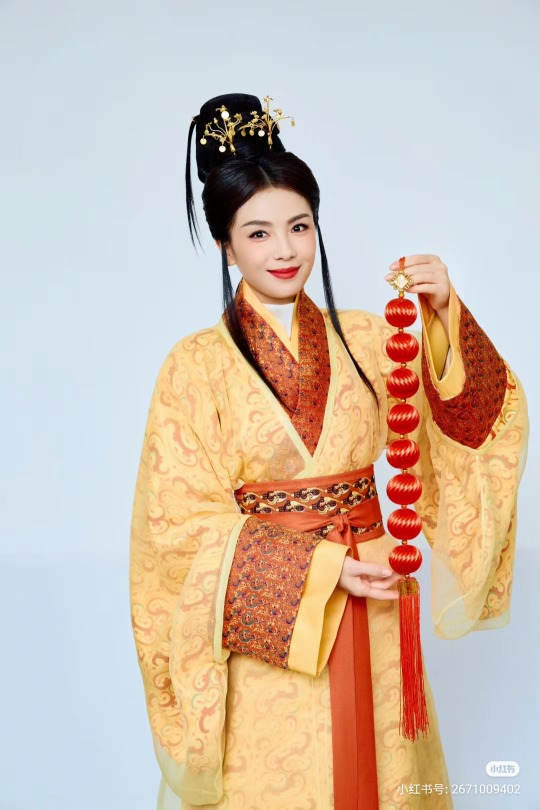


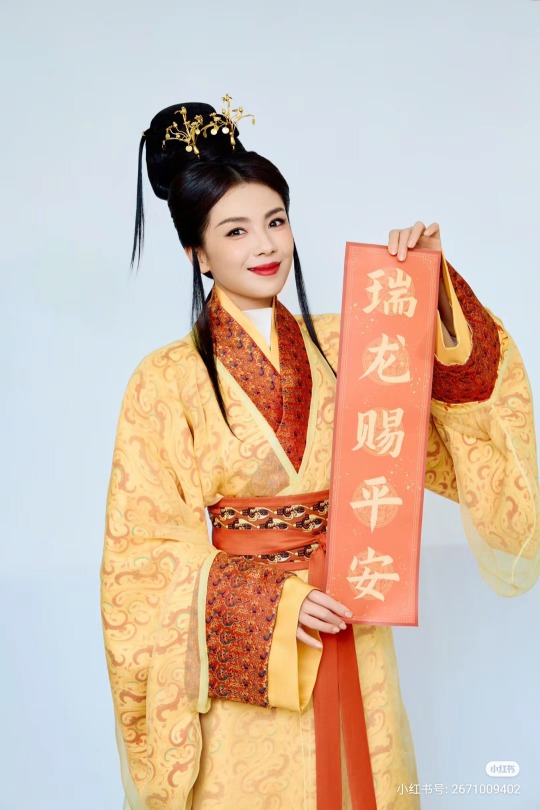
【Historical Artifacts Reference 】:
▶China Han Dynasty Murals<Part of the person holding the halberd and sword>, Luoyang Museum Collection.

▶China Jin Dynasty Painting By Gu Kaizhi (Chinese: 顧愷之,344–406)
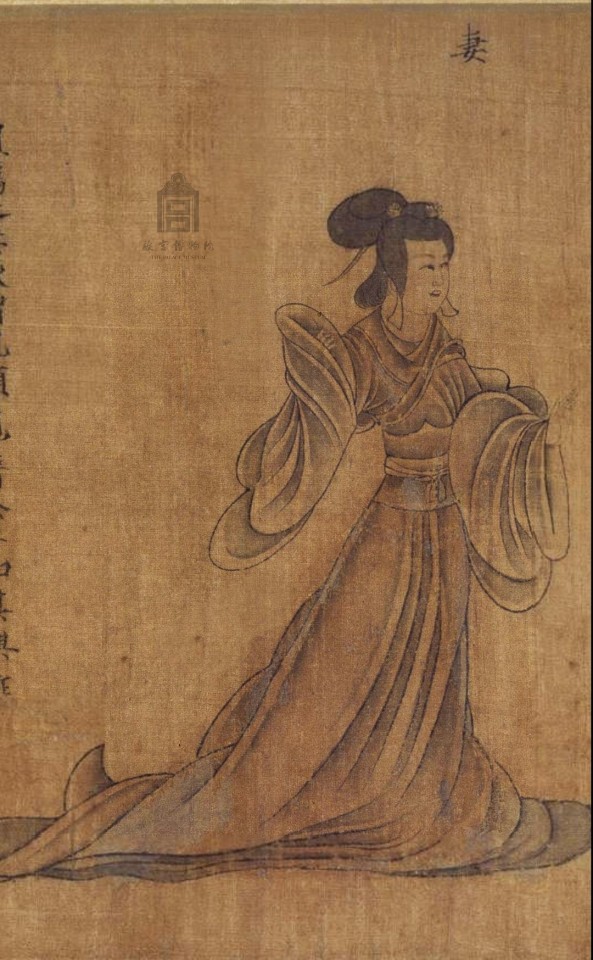

#chinese hanfu#Eastern Han Dynasty (25–220 A.D.)#hanfu#hanfu accessories#hanfu_challenge#chinese traditional clothing#china#chinese#漢服#汉服#中華風#liu tao#chinese fashion#historical fashion#historical hairstyle#chinese style
202 notes
·
View notes
Text
[Hanfu · 漢服]Chinese Ming Dynasty(1368-1644 AD) Hanfu Based On Ming Dynasty Portrait




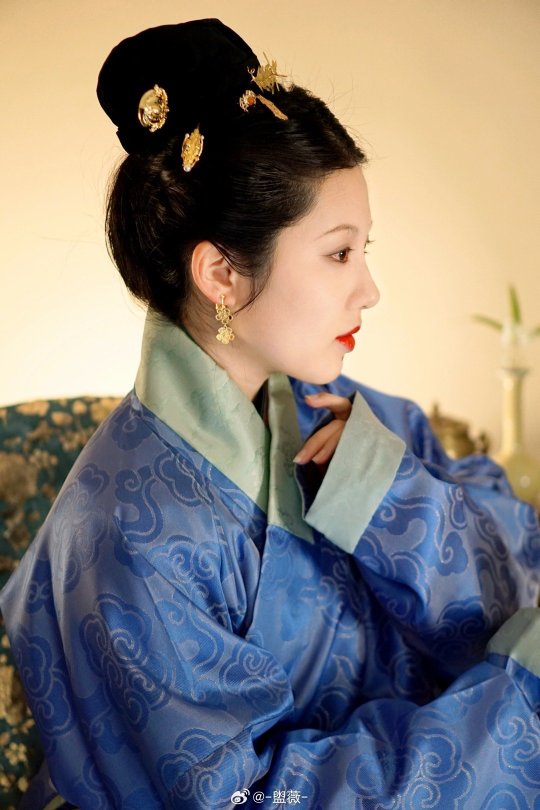




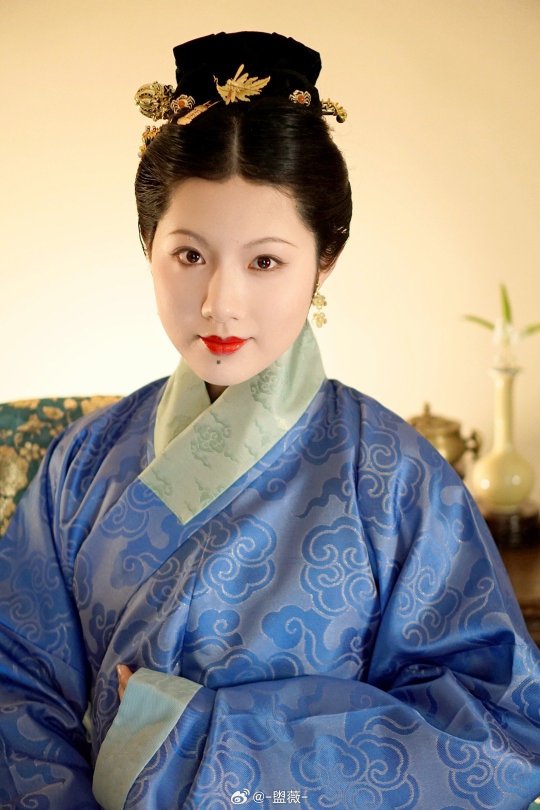


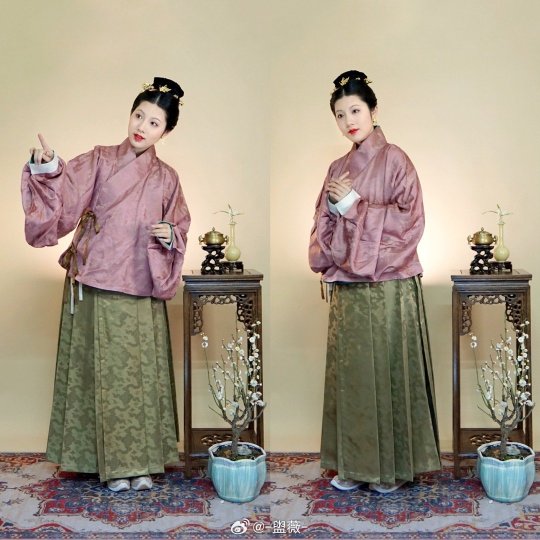
【Historical Artifacts Reference 】:
China Ming Dynasty Portrait of Chen Gongniang/陈恭娘容像Collection of Anhui Museum

China Ming Dynasty Portrait of Zhu Yinzhen/朱隐贞容像Collection of Anhui Museum

————————
📸Recreation Work &🧚🏻 Model :@-盥薇-
🔗 Weibo:https://weibo.com/3942003133/O0o77n2WN
————————
#chinese hanfu#Ming Dynasty(1368-1644 AD)#hanfu#chinese traditional clothing#hanfu_challenge#hanfu accessories#chinese#china#chinese historical fashion#chinese historical hairstyle#漢服#汉服#中華風#-盥薇-#Portrait of Zhu Yinzhen/朱隐贞容像#Portrait of Chen Gongniang/陈恭娘容像
112 notes
·
View notes
Text
[Hanfu · 漢服]Chinese Tang Dynasty(618–907AD)Traditional Clothing Hanfu Photoshoot
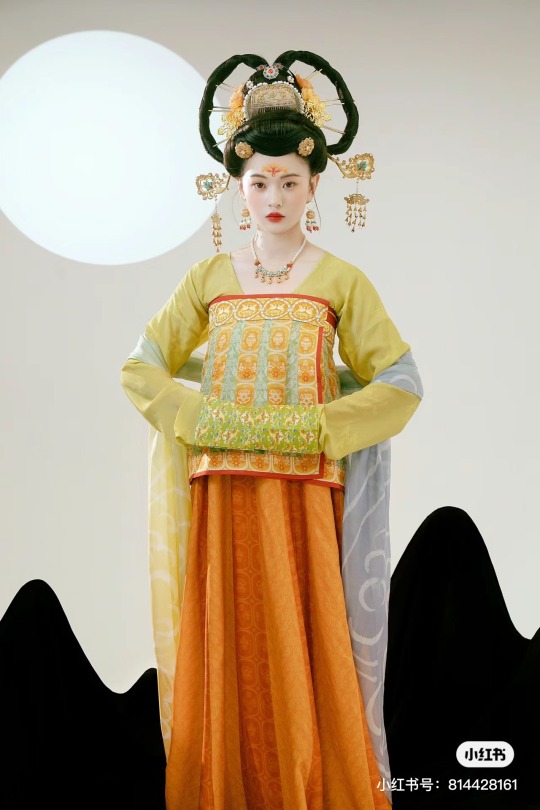
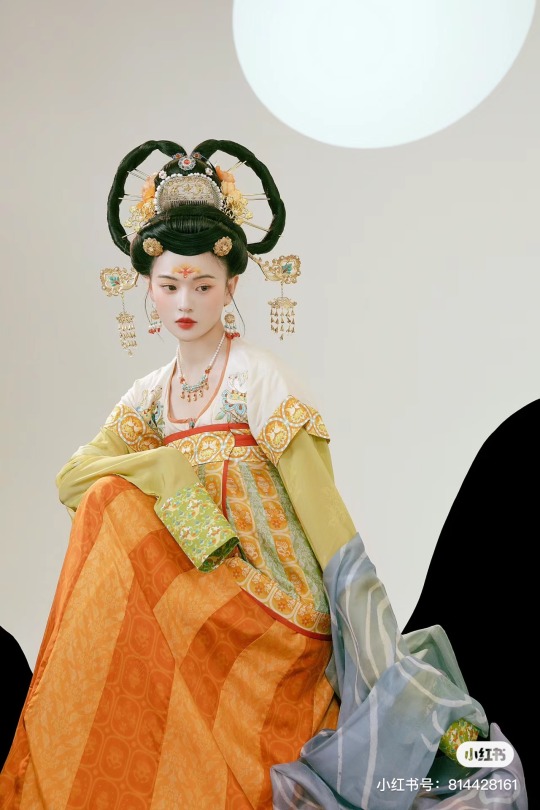
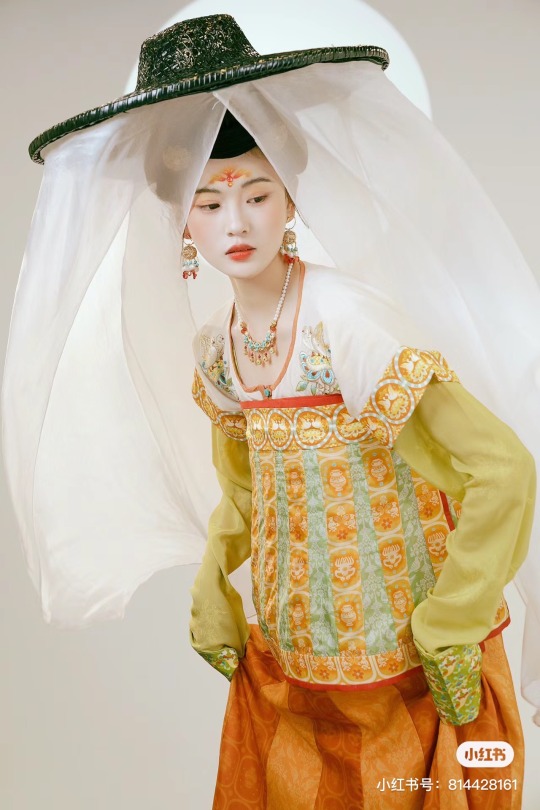
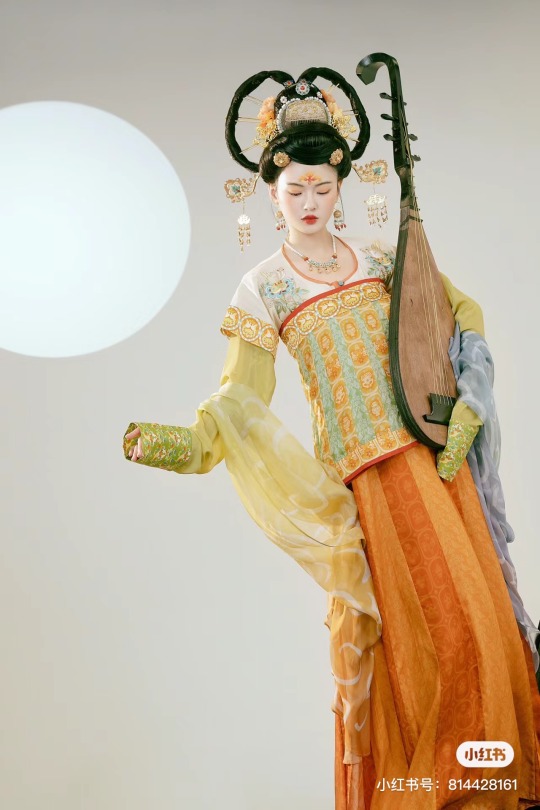
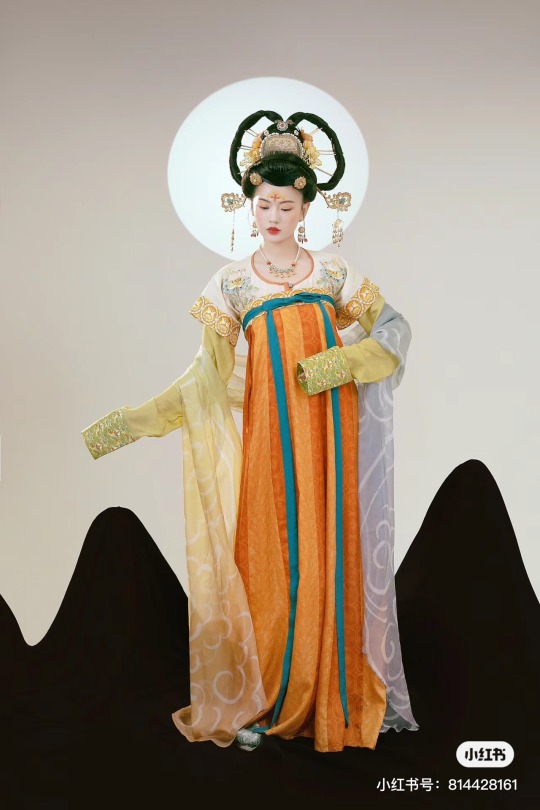
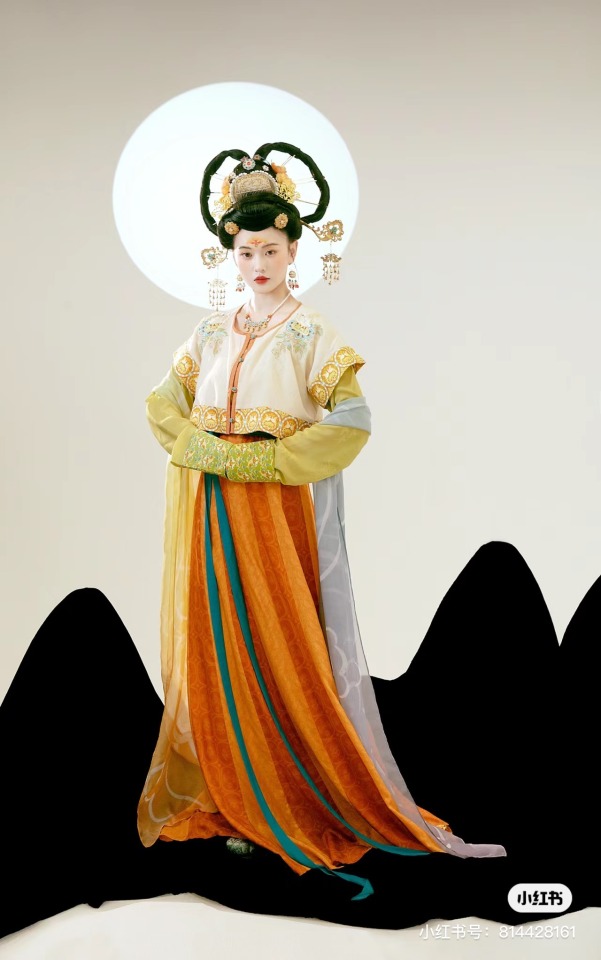
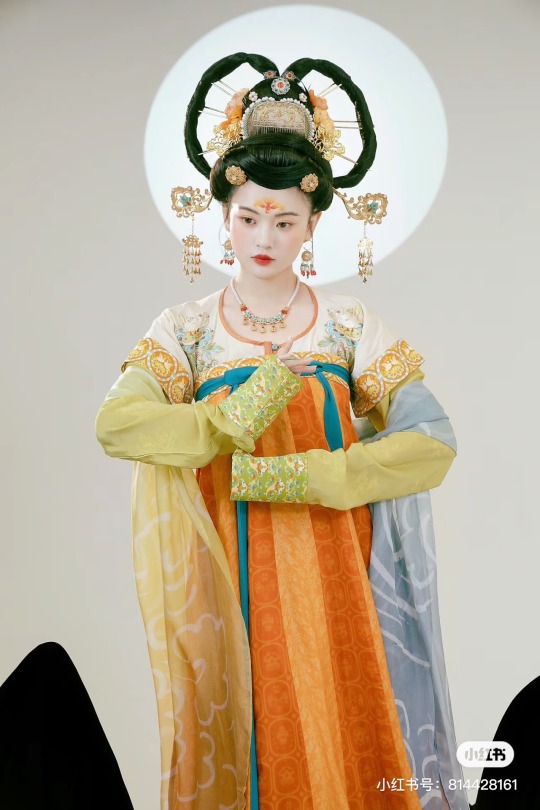

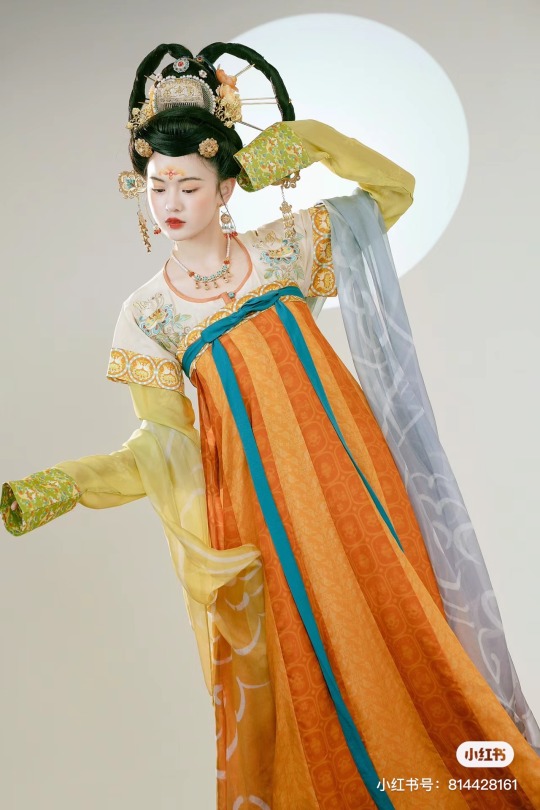
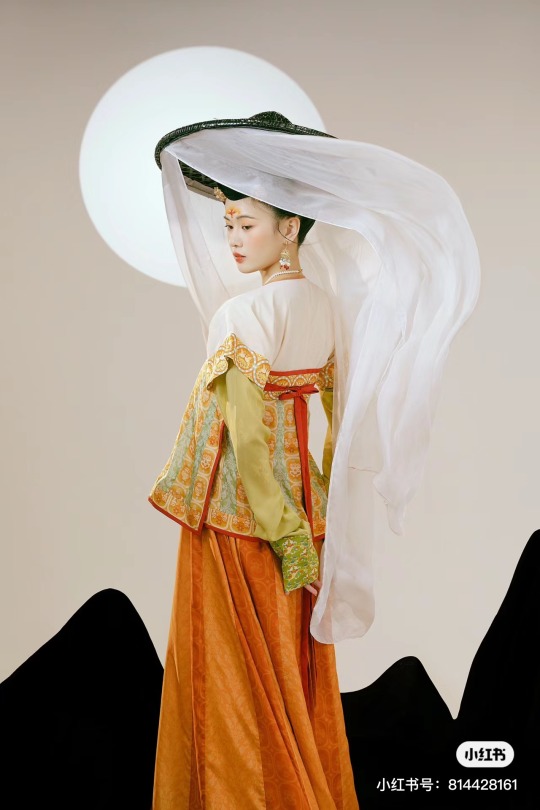


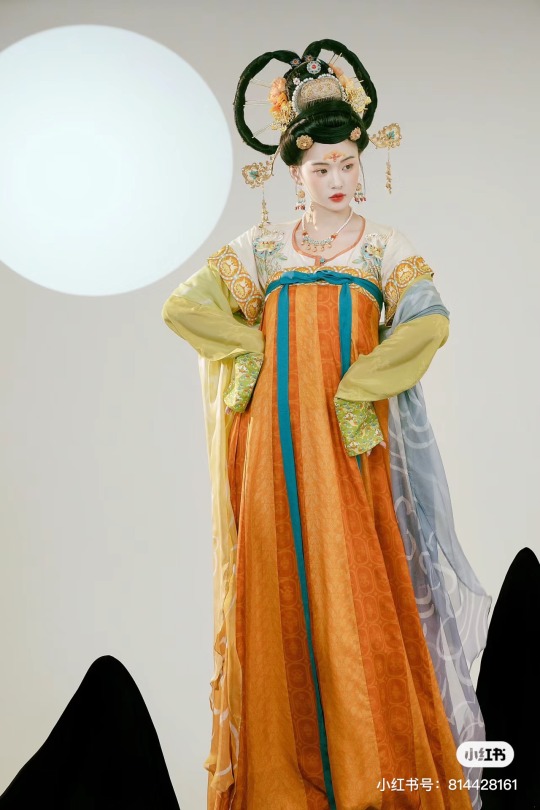
【Historical Artifacts Reference 】:
Mural from Princess Xincheng新城公主 of the Tang Dynasty (634-663)
Princess Xincheng新城公主 was the youngest daughter of Emperor Taizong of the Tang Dynasty in China and was born to the eldest Zhangsun Empress.
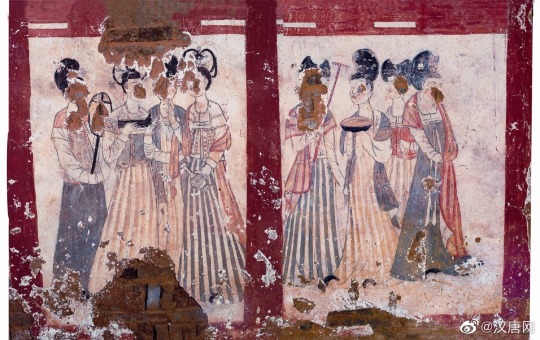
————————
📸Photo:@成都临溪摄影
🧚🏻 Model :@钟钟
👗Hanfu: @墨名堂真丝汉服 & 墨名堂的箱掌柜
🔗Xiaohongshu:http://xhslink.com/lrGnEB
————————
#chinese hanfu#Tang Dynasty(618–907AD)#hanfu#hanfu accessories#chinese traditional clothing#hanfu_challenge#chinese#china#hanfu history#chinese historical fashion#漢服#汉服#中華風#成都临溪摄影#墨名堂真丝汉服#Princess Xincheng新城公主
150 notes
·
View notes
Text
[Hanfu · 漢服]Chinese Tang Dynasty(618–907AD)Traditional Clothing Hanfu Based On Dunhuang Mural


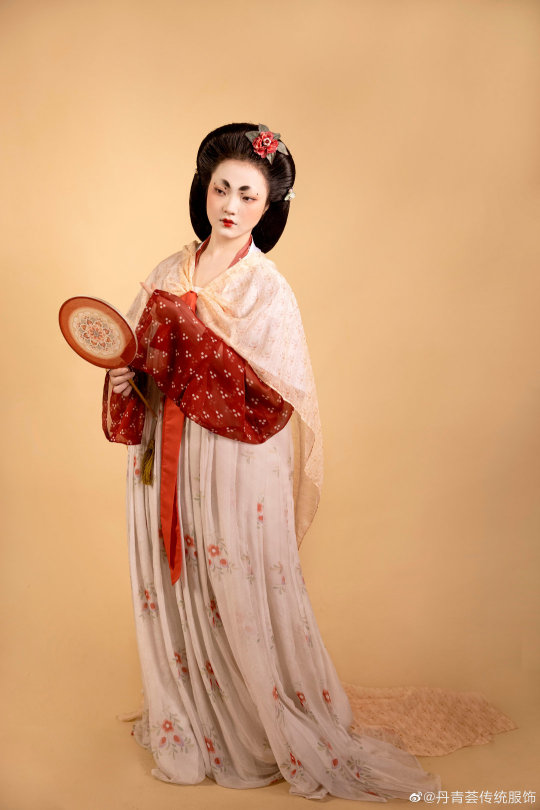
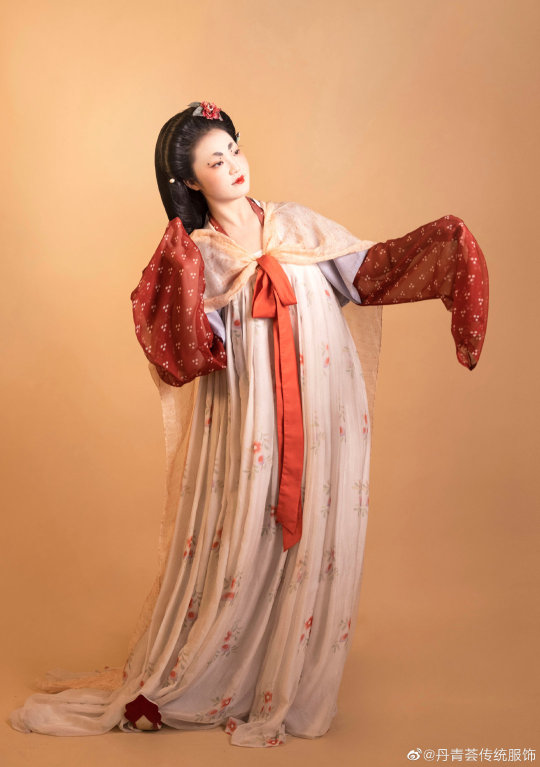

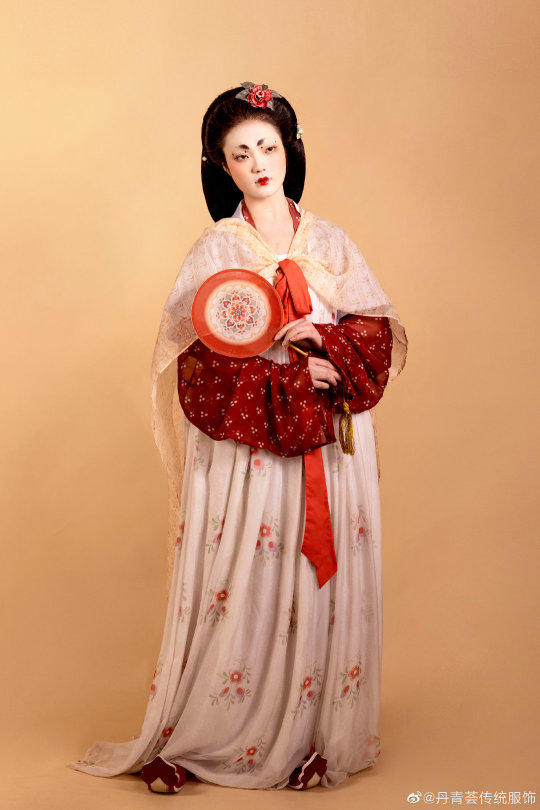

【Historical Artifacts Reference 】:
China Tang Dynasty Dunhuang Mural:
《都督夫人太原王氏礼佛图/Governor Wife Mrs.Wang and her daughters and servants in Cave 130 of Mogao Grottoes in Dunhuang》
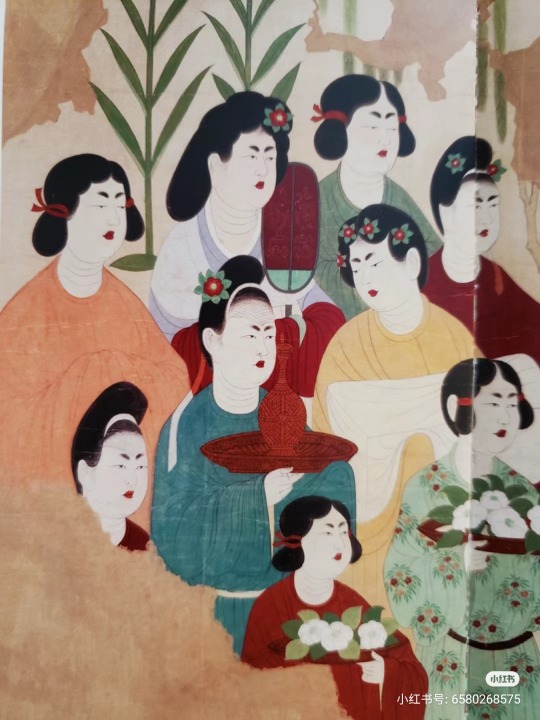

_________________
Recreation Work:@丹青荟传统服饰
🔗Weibo:https://weibo.com/6311444174/MCBp7hAbo
_________________
#chinese hanfu#Tang Dynasty(618–907AD)#hanfu#hanfu accessories#hanfu_challenge#chinese traditional clothing#china#chinese#chinese fashion#chinese historical fashio#chinese historical hairstyle#漢服#汉服#中華風#Duhuang Mural
212 notes
·
View notes
Text
🐲WISH EVERYONE HAVE A HAPPY LONG(龍/Dragon)YEAR

Wish everyone good luck in the year of the dragon and happy holiday!!
This is my first time to draw such big dragon, I kinda worried but surprisingly it's okay(ˊᗜˋ*)
2024 is the year of the Green Dragon(青龍) and also the year of the Wood Dragon.
※青 originally meant blue in ancient times, but in painting colors, if blue is mixed with a small amount of green, it is called cyan (one of the three subtractive primary colors), and it has multiple levels.So the dragon I drew is closer to blue><
【Historical Artifacts Reference 】:
Princess Xincheng新城公主 of the Tang Dynasty (634-663)
Princess Xincheng新城公主 was the youngest daughter of Emperor Taizong of the Tang Dynasty in China and was born to the eldest Zhangsun Empress.

Various Hairpin were Unearthed from the Tang Dynasty Tomb of Princess Yang of Wu

#chinese hanfu#chinese new year#year of the dragon#new year 2024#hanfu accessories#hanfu_challenge#chinese traditional clothing#chinese#china#hanfu#original illustration#hanfu illustration#illustrator#漢服#汉服#中華風#chinese style#cny2024
270 notes
·
View notes
Text
[Hanfu · 漢服]Chinese Tang Dynasty (618–907AD) Traditional Clothing Hanfu Photoshoot
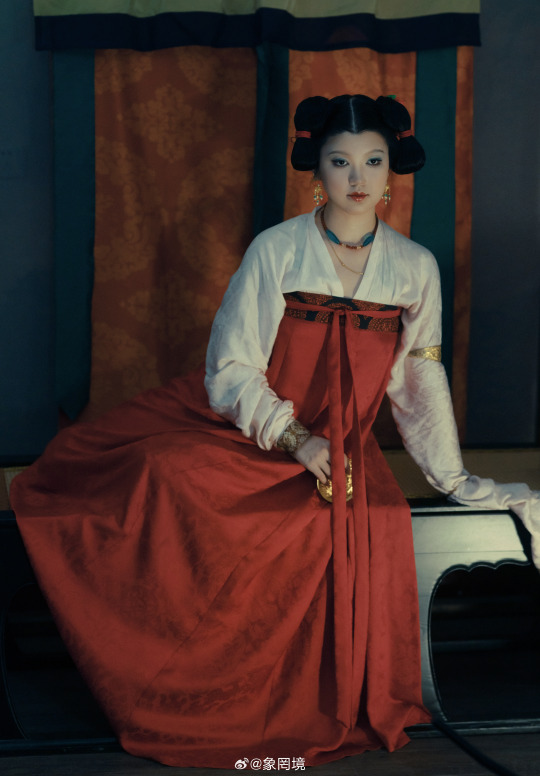
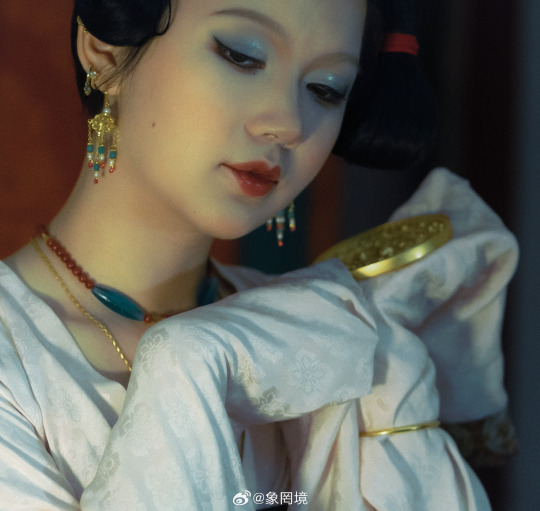


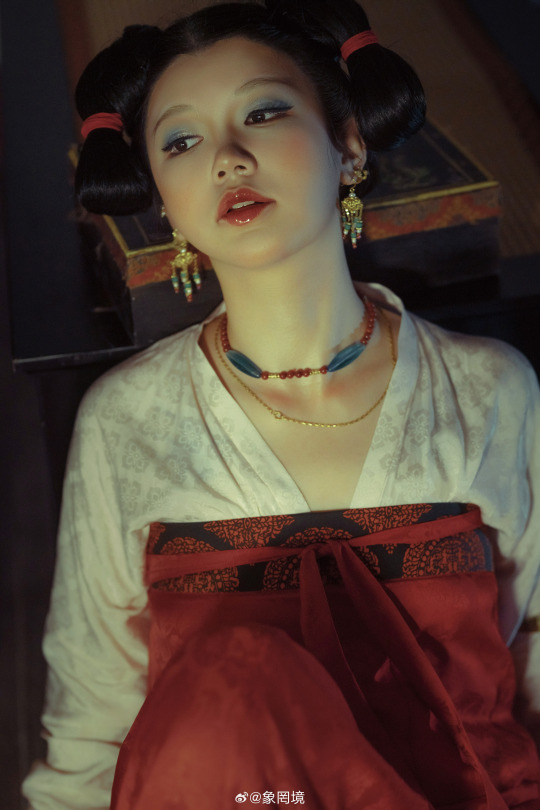
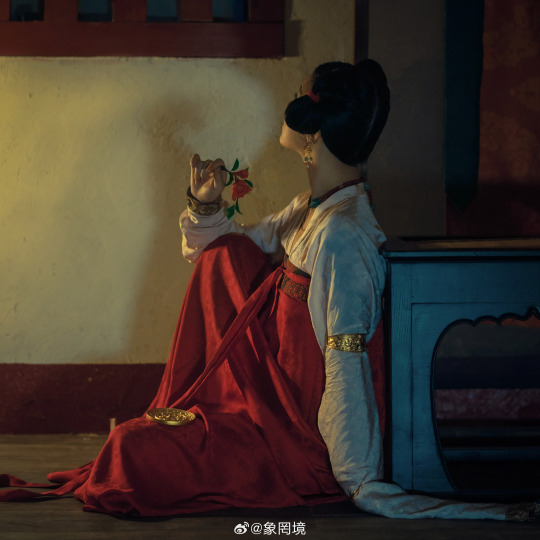
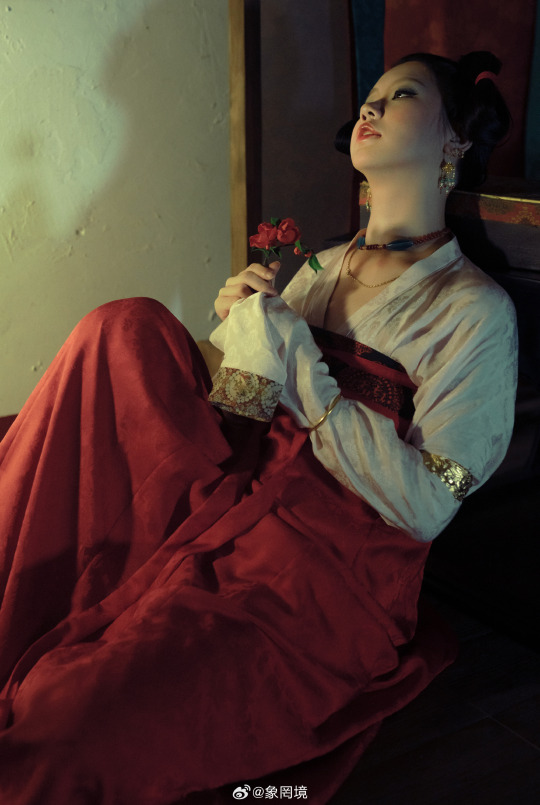
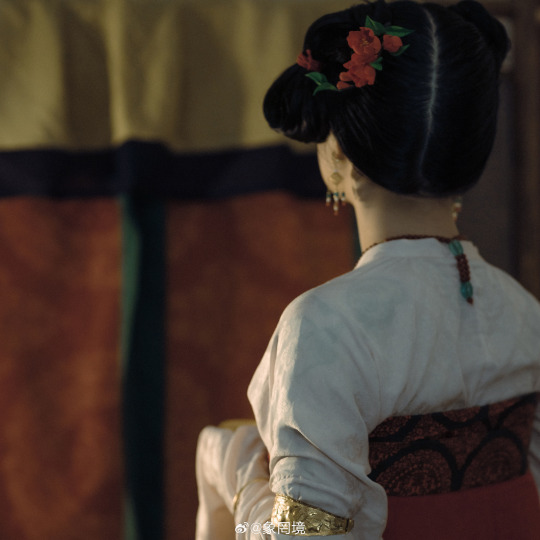
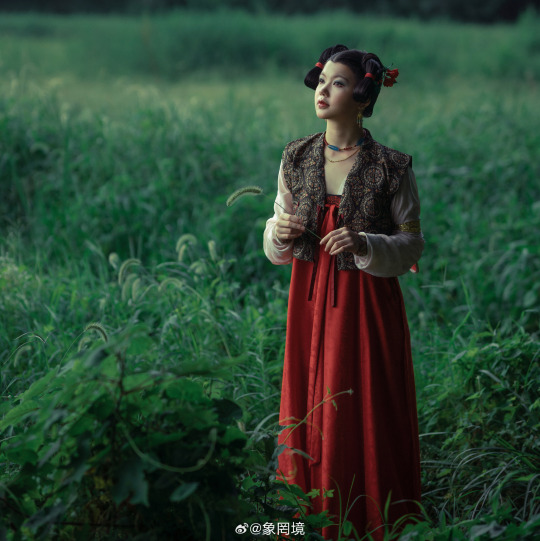

————————
📸Photo:@象罔境
🧚🏻 Model :@仑百百客
💄Stylist:@象罔境
🔗Weibo:https://weibo.com/2825602213/NBwrgBPeo
————————
#chinese hanfu#Tang Dynasty (618–907AD)#hanfu#hanfu accessories#hanfu_challenge#chinese traditional clothing#china#chinese#chinese historical fashion#hanfu history#chinese history#chinese style#漢服#汉服#中華風#象罔境#仑百百客
154 notes
·
View notes
Text
[Hanfu · 漢服]Chinese Five Dynasties & Ten Kingdoms Period(907-979) Traditional Clothing Hanfu Based On Dunhuang Murals
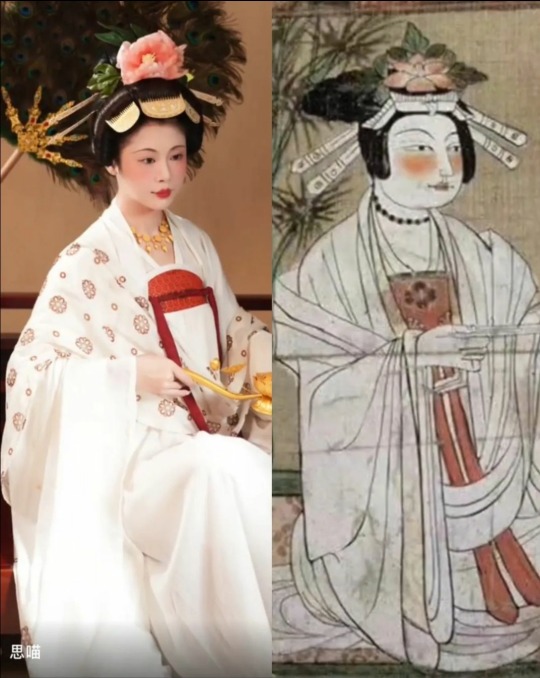
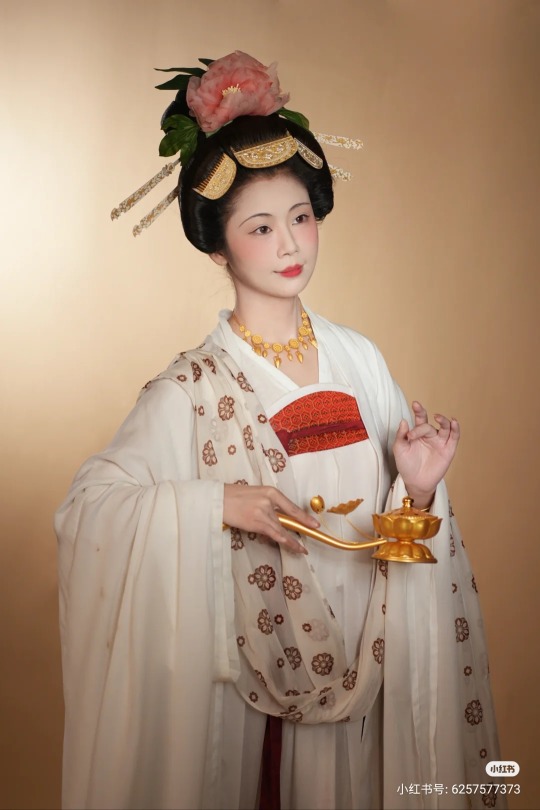
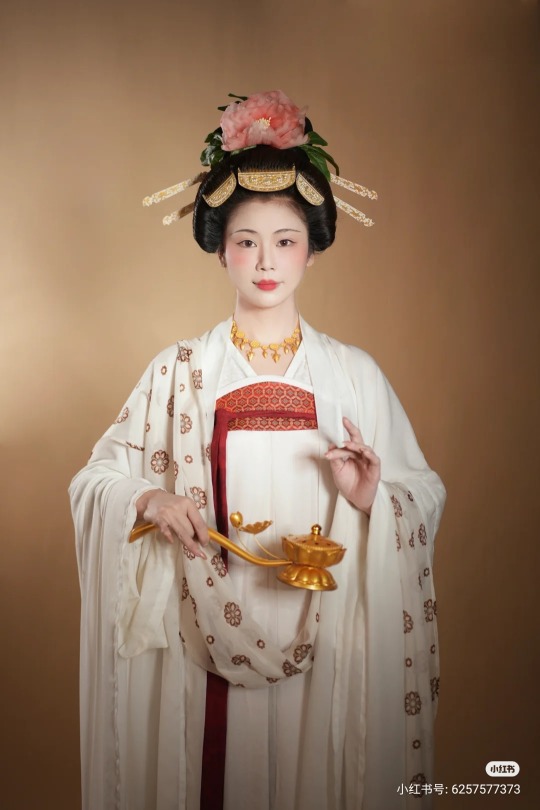

【Historical Artifacts Reference 】:
Restoration Based On Chinese Five Dynasties Period (981 AD) Dunhuang Murals:
<Buddhist donatress Chang, Mogao Grottoes,Buddhist donor, detail of 1000-armed, 1000-eyed Avalokiteshvara. Dunhuang, Mo-kao Cave No. 17, 981 AD, Guiyi era(Five Dynasties and Ten Kingdoms period). Painting on silk>

————————
📸Recreation Work: @思喵
🧚🏻♀️Model:@思喵
💎Hairpin:@华髻国风艺术首饰
🔗Xiaohongshu App:http://xhslink.com/IqOc2A
————————
#chinese hanfu#Five Dynasties & Ten Kingdoms Period(907-979)#hanfu#hanfu accessories#hanfu_challenge#chinese traditional clothing#china#chinese#hanfu history#chinese history#chinese historical fashion#漢服#汉服
113 notes
·
View notes